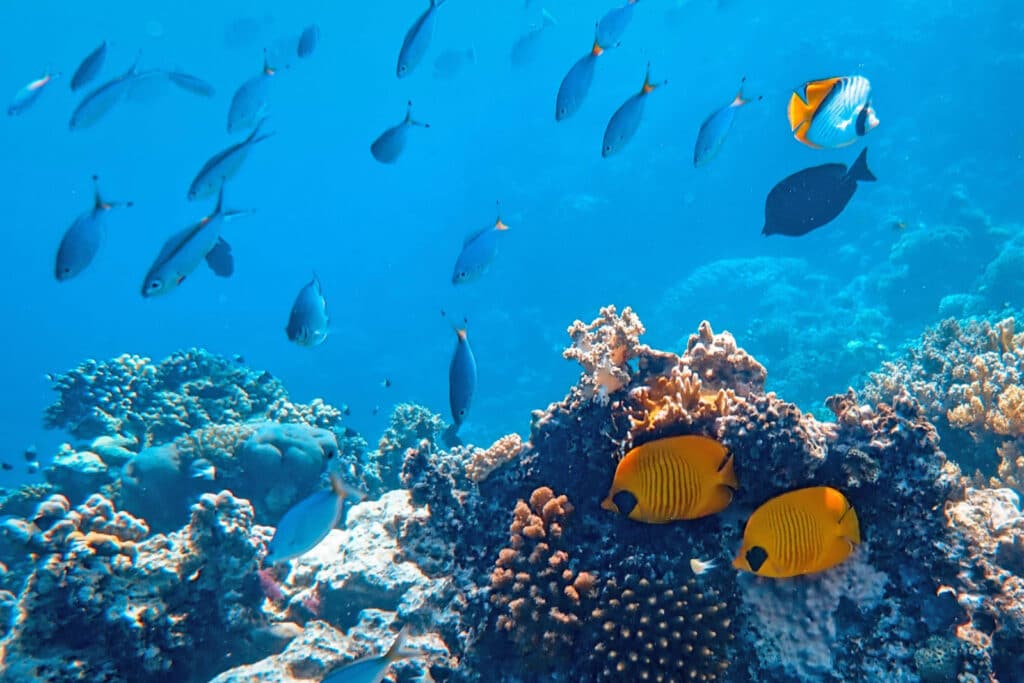
No matter where you travel in the Spanish-speaking world, you’re guaranteed to come across fish in some way or another.
Even if you never spot a fish or body of water, you’re bound to eventually come across Spanish idioms, expressions, songs and stories that invoke the various names of common fish.
That’s why it behooves any learner to pick up the Spanish names for fish that have a presence in our lives, environments and cuisines!
Keep reading for 50 names for fishes in Spanish, plus some key terms and phrases for talking about fish—whether you’re admiring them in the wild or on your plate.
Contents
Download:
This blog post is available as a convenient and portable PDF that you
can take anywhere.
Click here to get a copy. (Download)
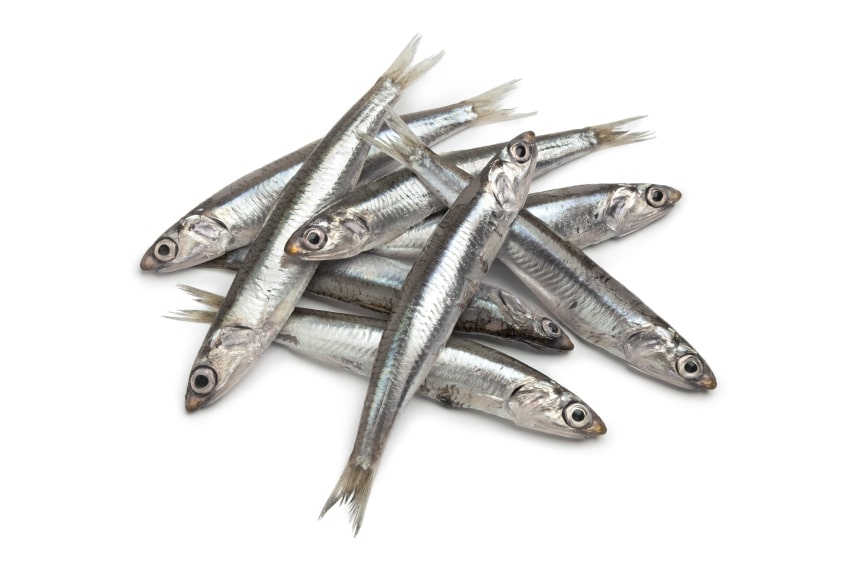
Boquerón
(white anchovy) is a small, cured type of anchovy with a delicate, salty taste, often served as a tapa or used in salads.
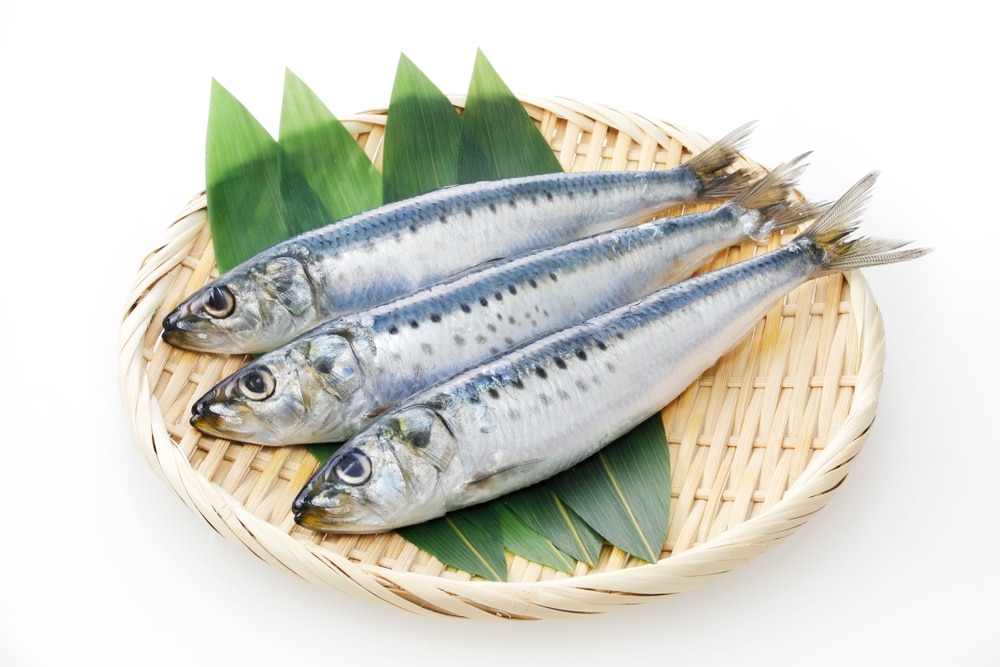
Sardines are sold in cans in Spanish-speaking countries, just like in our home countries. So, you can talk about people being squished together, just as you would in English, with the metaphor estar como sardinas en lata
(to be like sardines in a can).
3. Atún
— Tuna
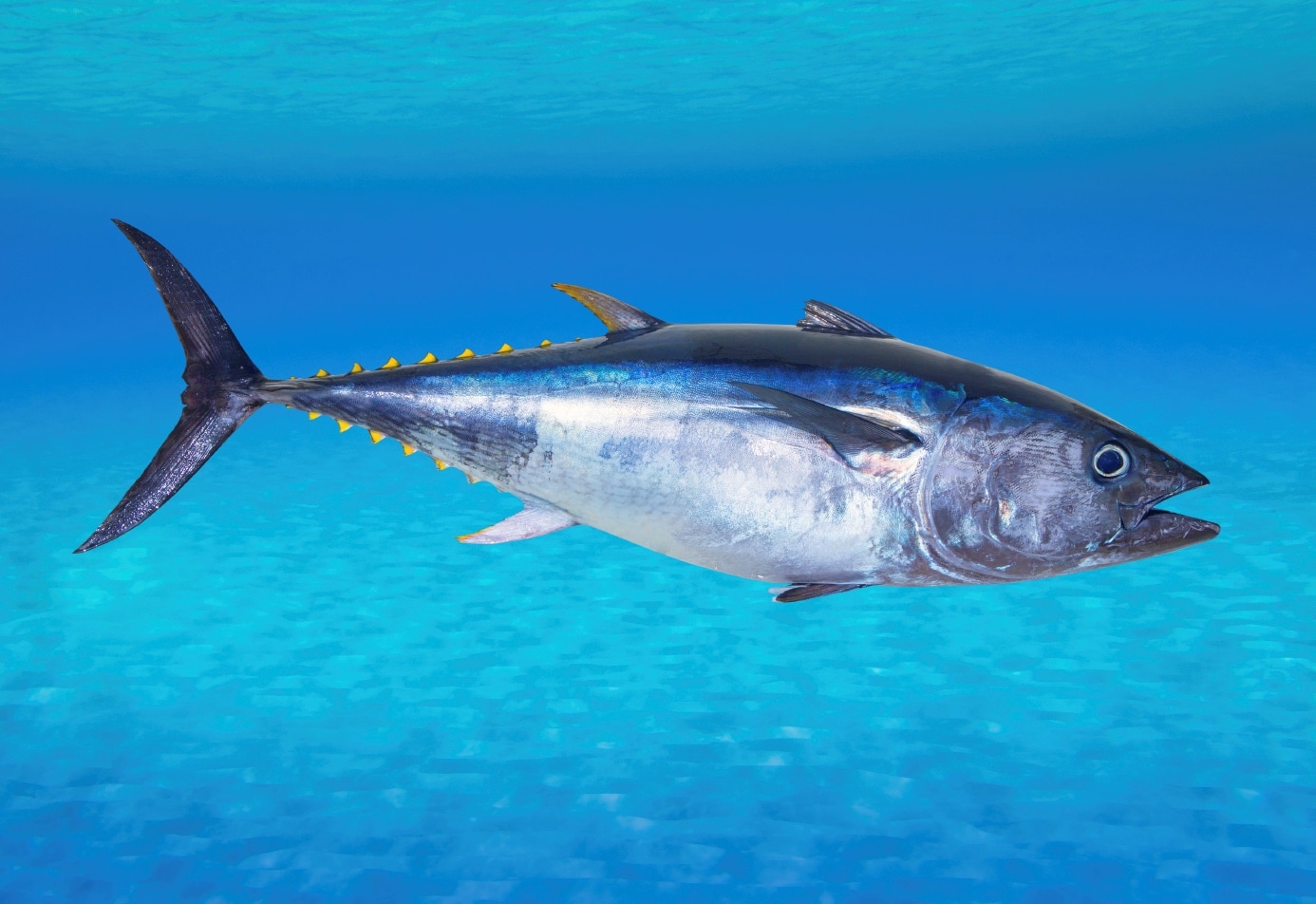
In Spanish-speaking countries, tuna is every bit as popularly eaten and sold in cans ( atún enlatado
— canned tuna) as it is elsewhere in the world. That means you can watch funny commercials or listen to catchy jingles to remember the word atún and other Spanish language words.
You may hear albacore tuna referred to as albacora
in some areas, and skipjack tuna or striped tuna as bonito
.
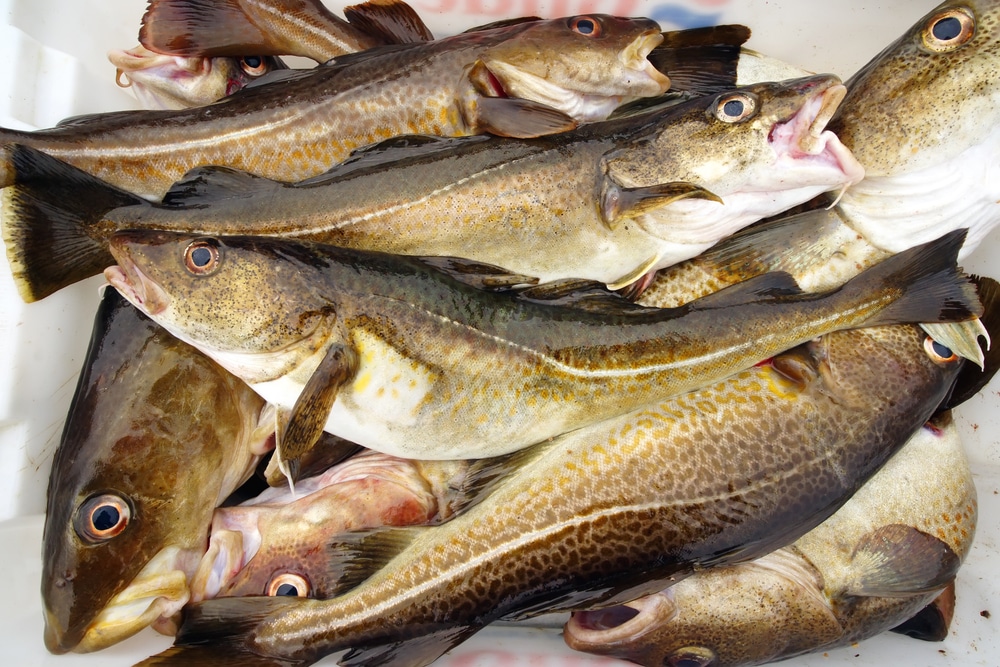
This fish is so prevalent in cooking and culture, that it’s even a common last name! There’s also a cute Latin American saying that goes “¡Chao pescao, bacalao!”
(Bye fish, bacalao!) which is the equivalent of our “See you later, alligator!”.
Dried, salted bacalao is found all over the Spanish-speaking world. One notable dish that uses it is the Ecuadorian fanesca
, a stew featuring salty bacalao and 12 different types of grains and legumes, which is cooked for the Easter Holy Week.
Another fish in this family is the haddock or el eglefino
, often used in the famed British fish and chips.
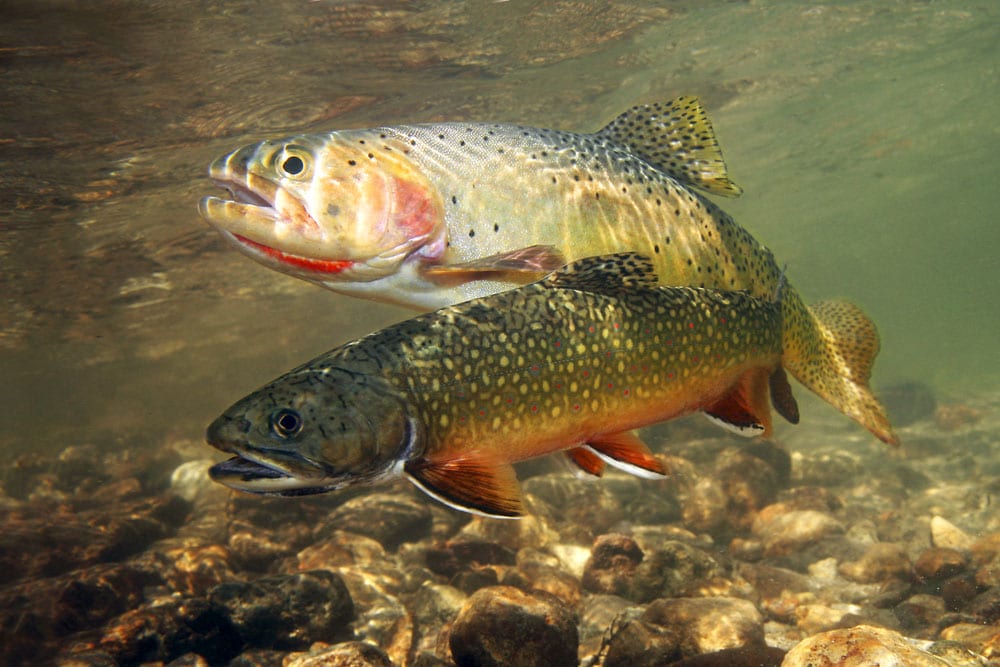
In Mexico and parts of Central America, you can say “ponte trucha”
—it’s basically an even more colloquial version of “ponte pilas.”
Both expressions mean “look alive,” “be aware” or “open your eyes.”
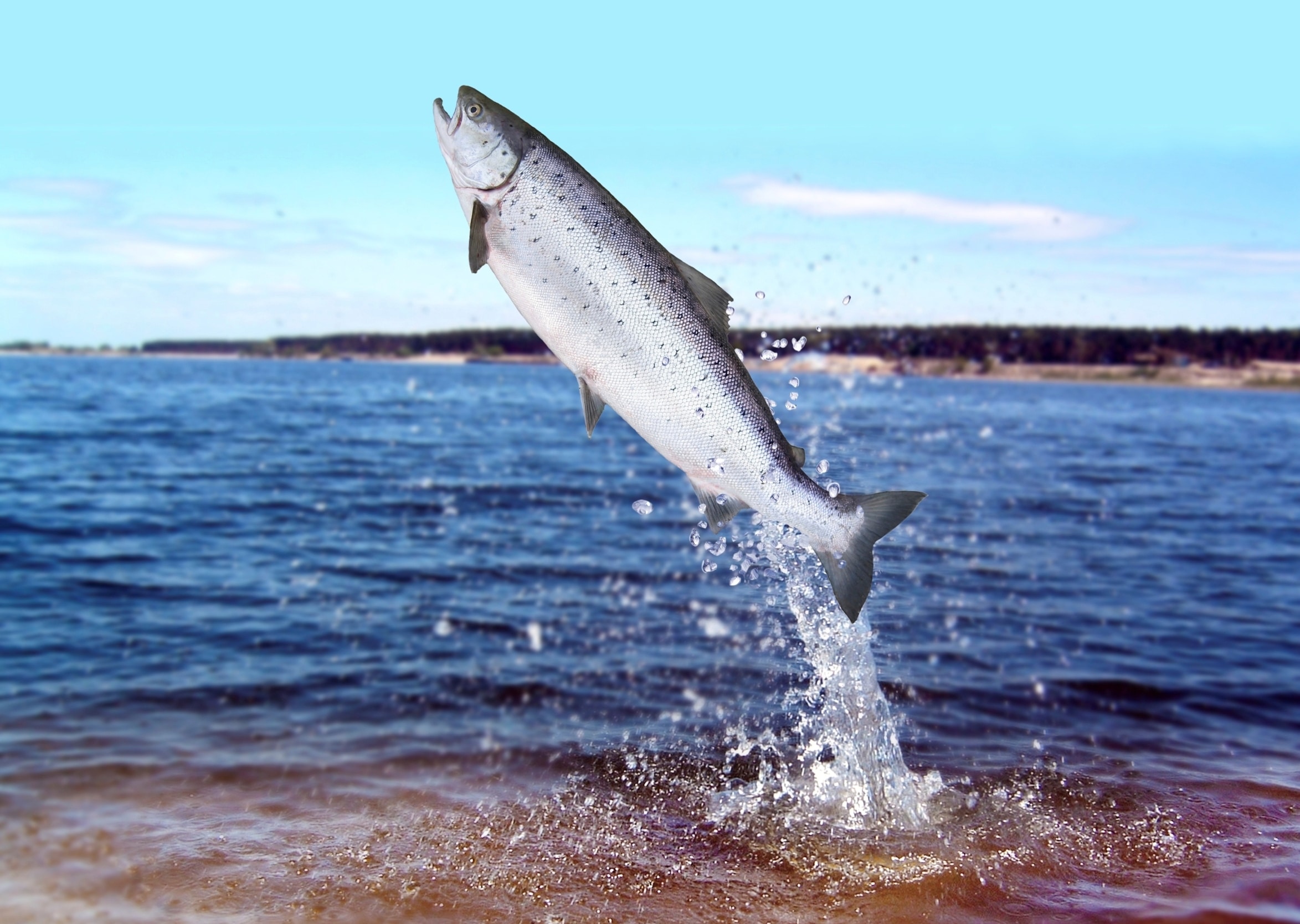
This Spanish fish name should be easy to remember—just don’t forget to pronounce the l, as it’s not silent like in English!
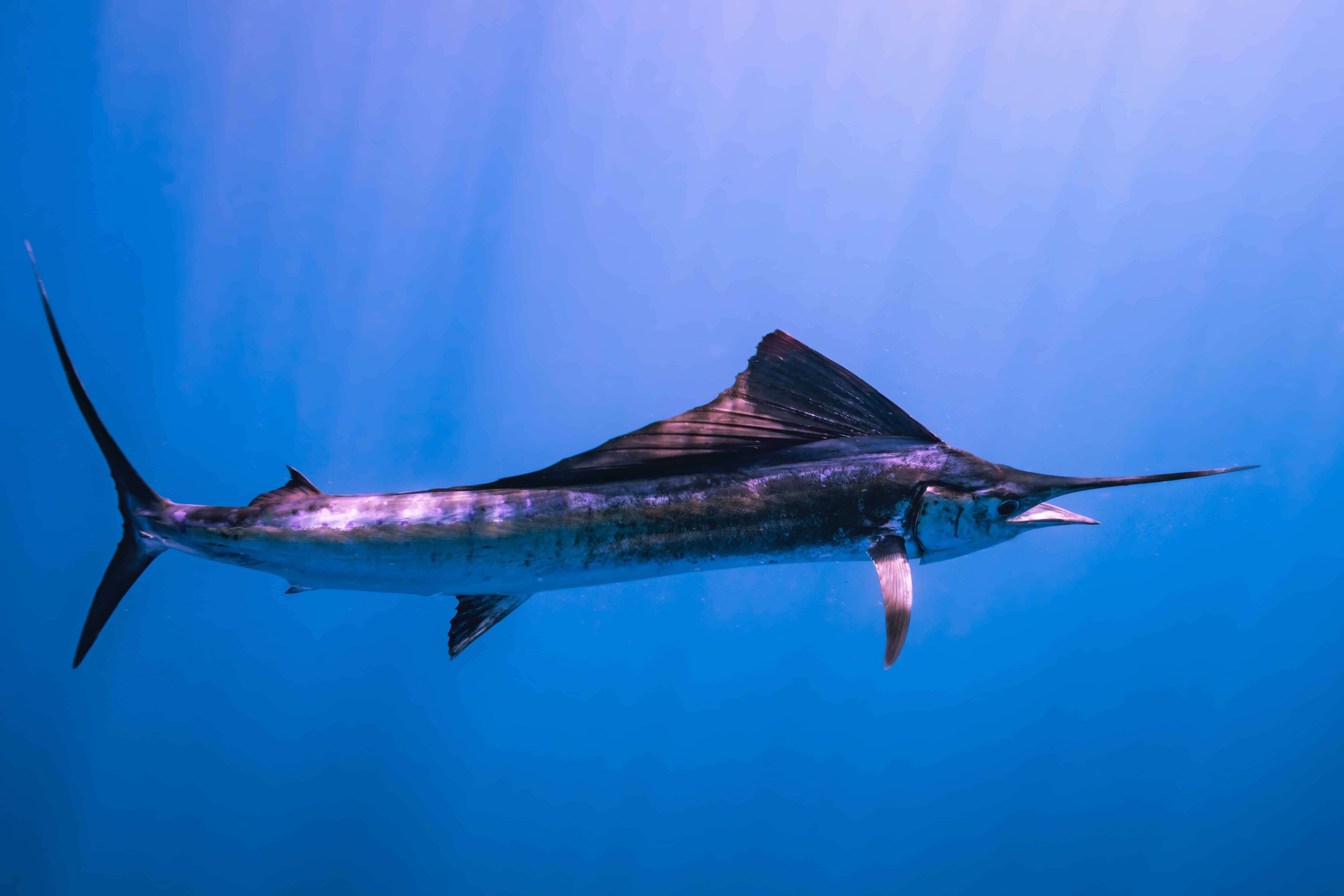
This recognizable fish also has the Spanish name of el espadarte
. Now you can add espada (sword) to your vocabulary list, too!
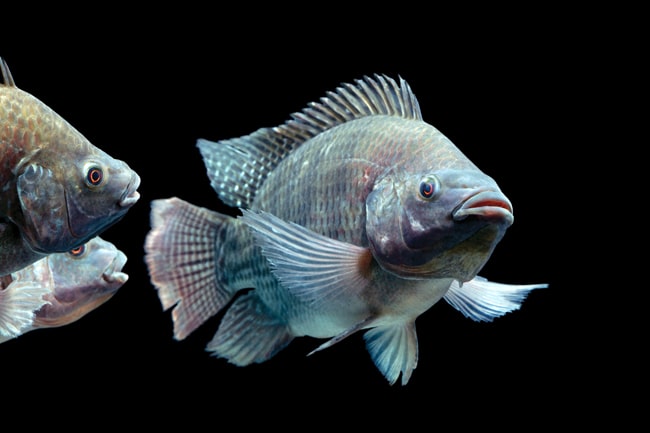
If you live in the United States, odds are that the tilapia you enjoy comes from a Spanish-speaking country. Honduras and Colombia are the top exporters of fresh tilapia to the U.S.
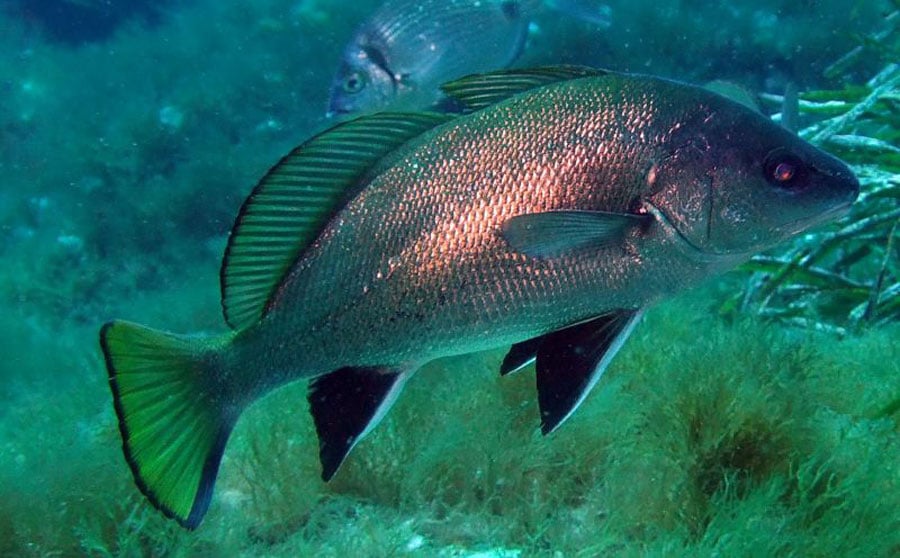
This fish has tender white meat which makes it a primo selection for ceviche
and any kind of soup or stew. It’s similar to the sea bass, and the names are sometimes used interchangeably.
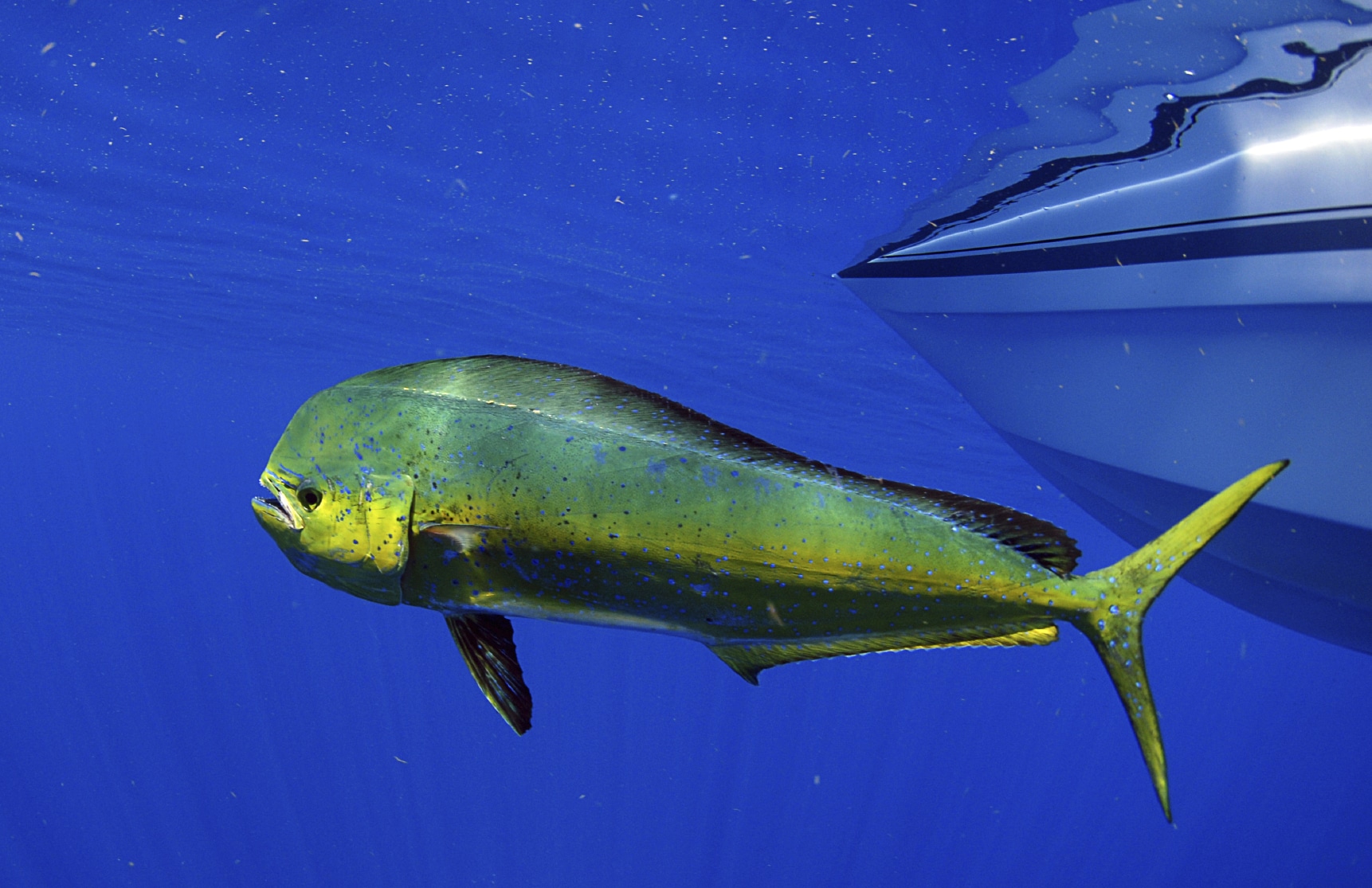
Llampuga is a colloquial name for this fish in parts of Latin America where it’s more commonly fished (Gulf of Mexico, Caribbean and Central America) and even amongst Spanish-speaking Floridians. The particle seems to flexibly change between el and la in speaking and writing. El dorado
is another option.
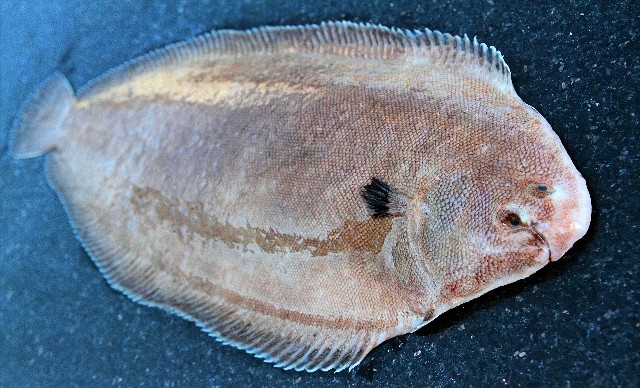
Lenguado de arena
(sand sole) is a type of sole fish found in sandy coastal areas.
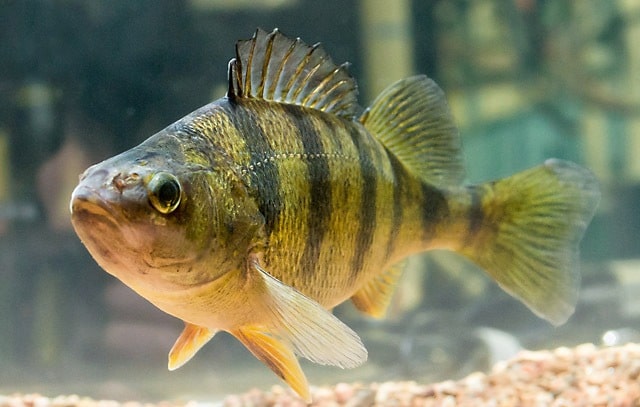
Due to its colonizing nature and threat to native species, this fish is in el Catálogo Español de Especies Exóticas Invasoras (the Spanish Catalog of Invasive Alien Species). Because of the restrictions on catching, transporting and selling it, most of the perch you’ll find on menus in Spain actually comes from Africa.
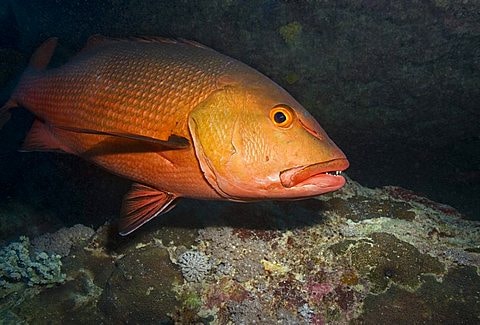
or el pargo colorado
. It’s found in deep waters of the Gulf of Mexico and along the eastern coasts of North America, Central America, and northern South America.
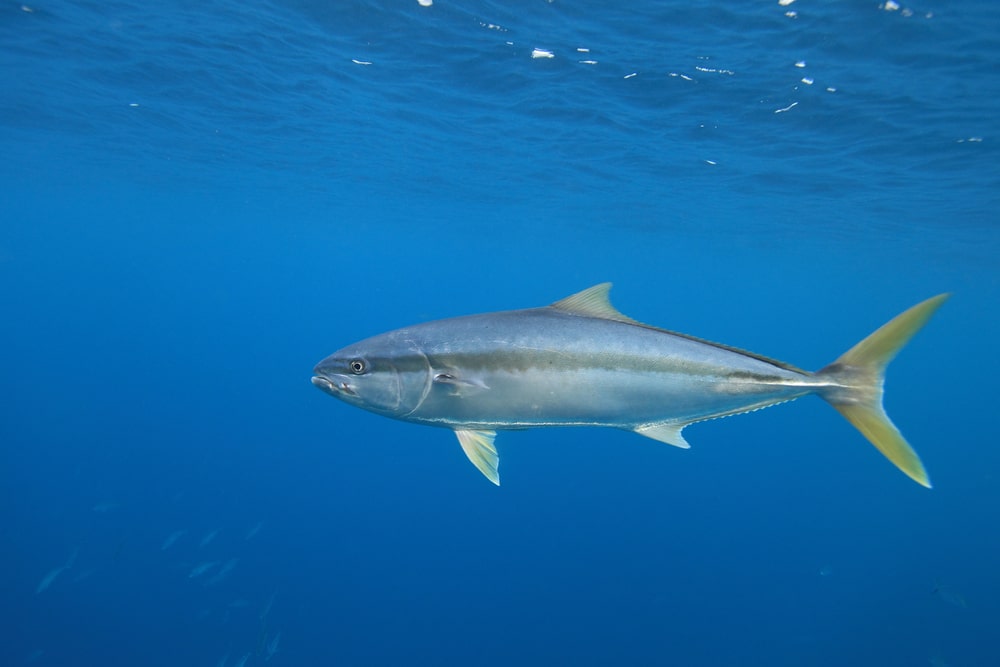
There’s some confusion with this fish as several species of amberjack fish used in sushi (including the Japanese amberjack, greater amberjack and yellowtail amberjack) are referred to as “yellowtail.”
Amberjack fish are called serviolas in Spanish but you may find a variety of different names used for the species found in your sushi rolls including el pez Hamachi
, pez de cola amarilla
, pez limón
, el jurel de Castilla
, dorado chileno
and palometa chilena
.
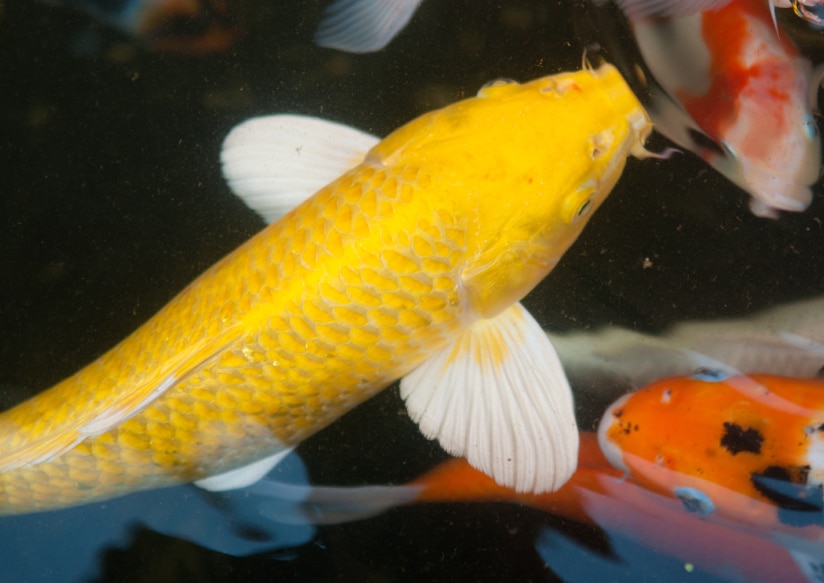
This well-known fish has been introduced to every continent except Antarctica and has been listed as one of the 100 most harmful invasive alien species in the world by the International Union for Conservation of Nature (IUCN).
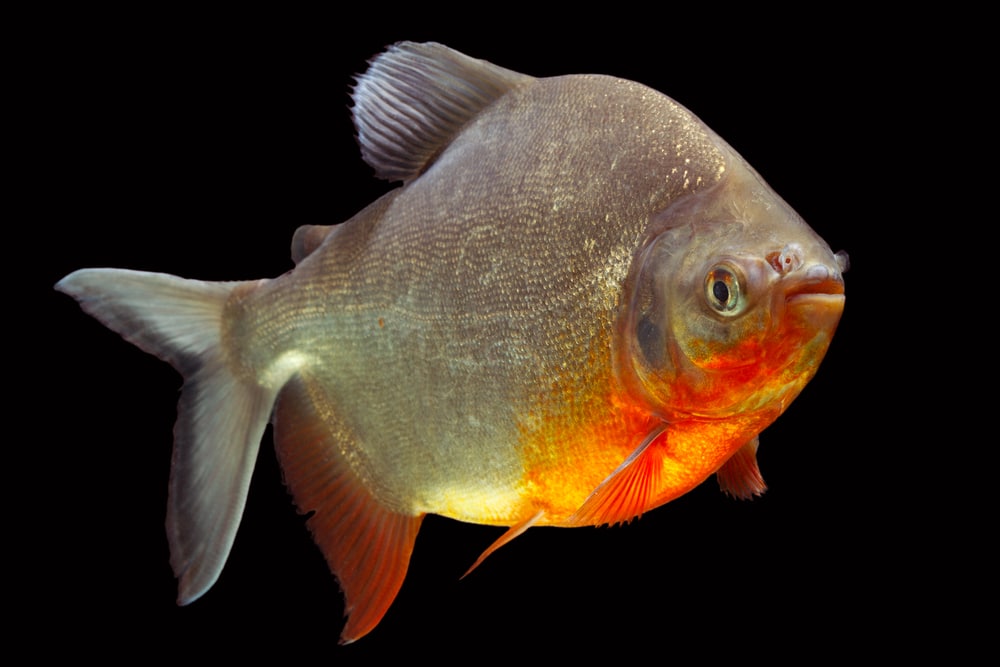
This type of fish is native to Amazonian rivers, so there’s no equivalent name in English. We commonly refer to it as cachama, pacu
or tambaqui
, all of which have origins in Spanish and regional indigenous languages of the Amazon.
If you’re heading on an Amazonian adventure, chances are you’ll feast on one of these big fish, fried with a side of yuca hervida (boiled yucca/cassava root).
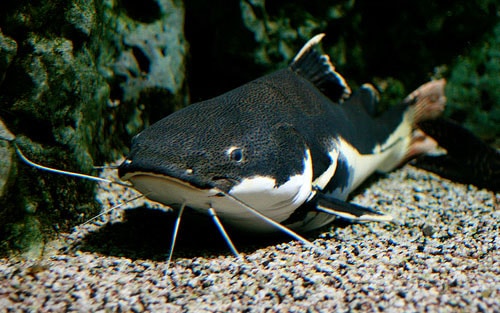
This is another fish you’ll find on the menu more often in Amazonian regions, and most often served in a simple caldo de bagre
(catfish soup/broth).
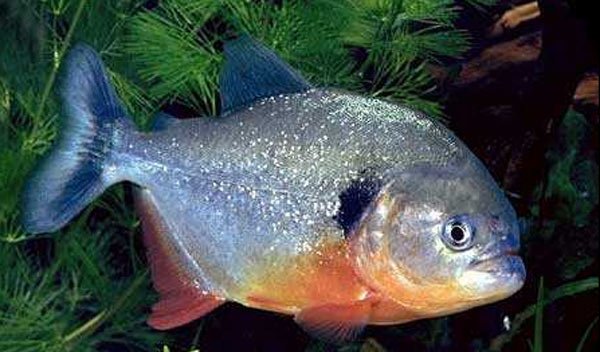
This is a great word for describing anything tiny that bites or nibbles, like a teething infant or poorly-behaved chihuahua.
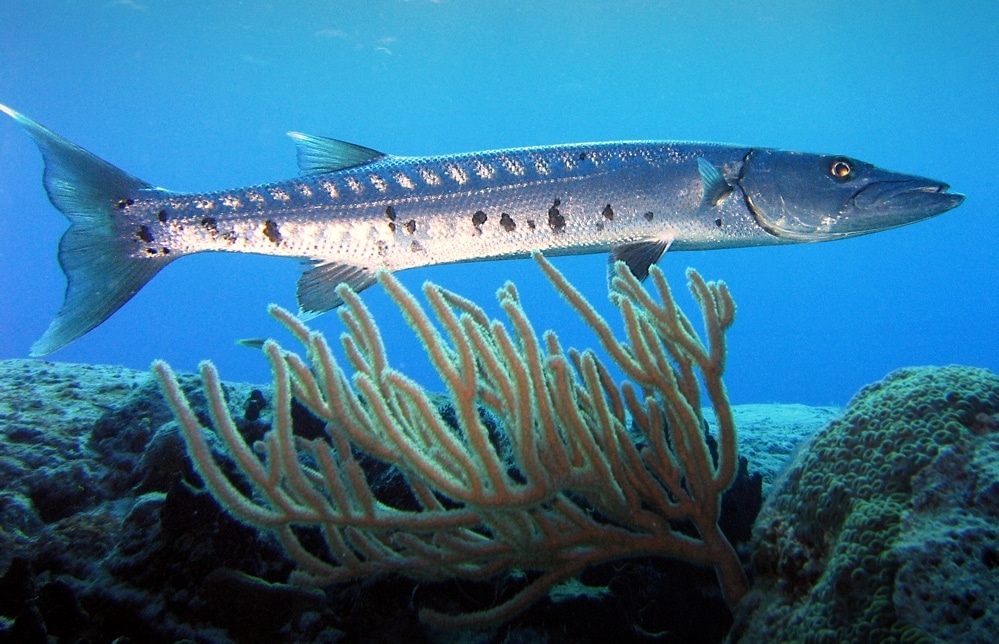
These large, ferocious fish are found in tropical and subtropical waters all over the world. If you do some sport fishing in a Spanish-speaking country, you may come across them and will easily be able to identify them.
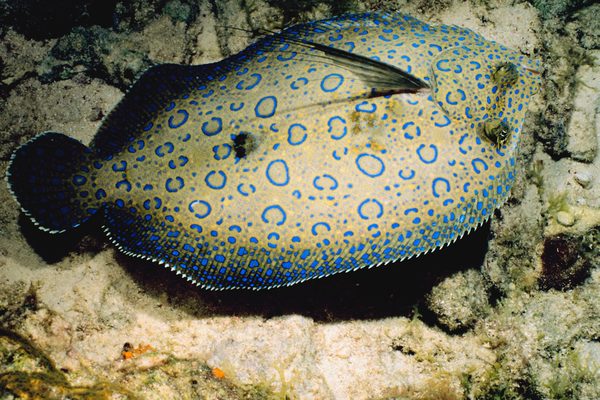
This fish has an interesting appearance with a flat body and both eyes on one side of its head. It’s commonly used in fish fillets or as a stuffing in seafood dishes. Ironically, Ariel’s best friend Flounder in “The Little Mermaid” is not actually a flounder fish.
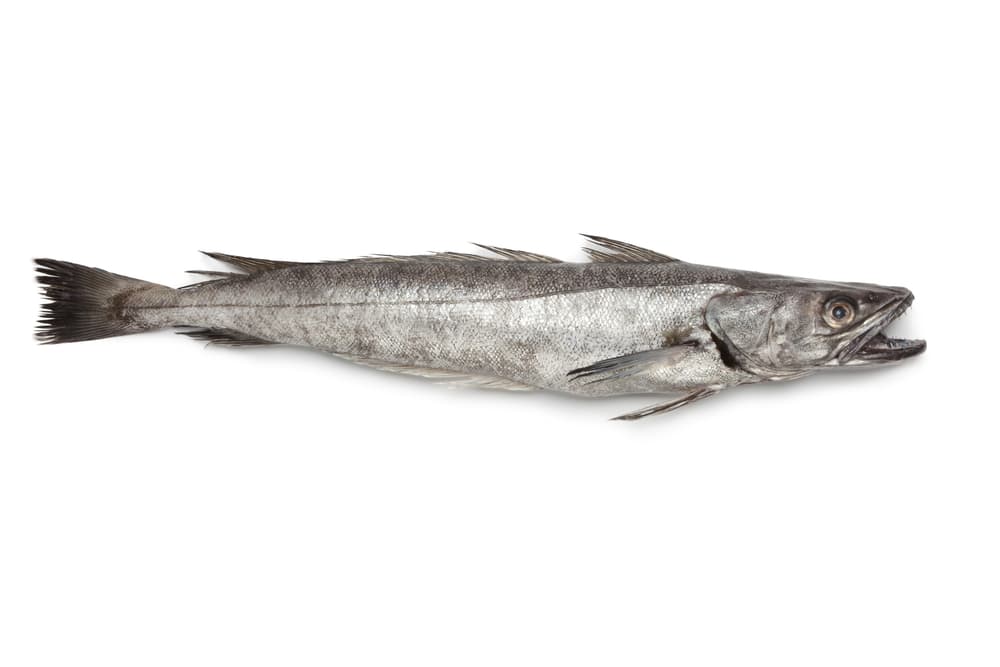
While this is a popular Latin American choice as well, merluza is a go-to fish for restaurant dishes and home-cooked recipes in Spain.
22. El Mero
— Grouper
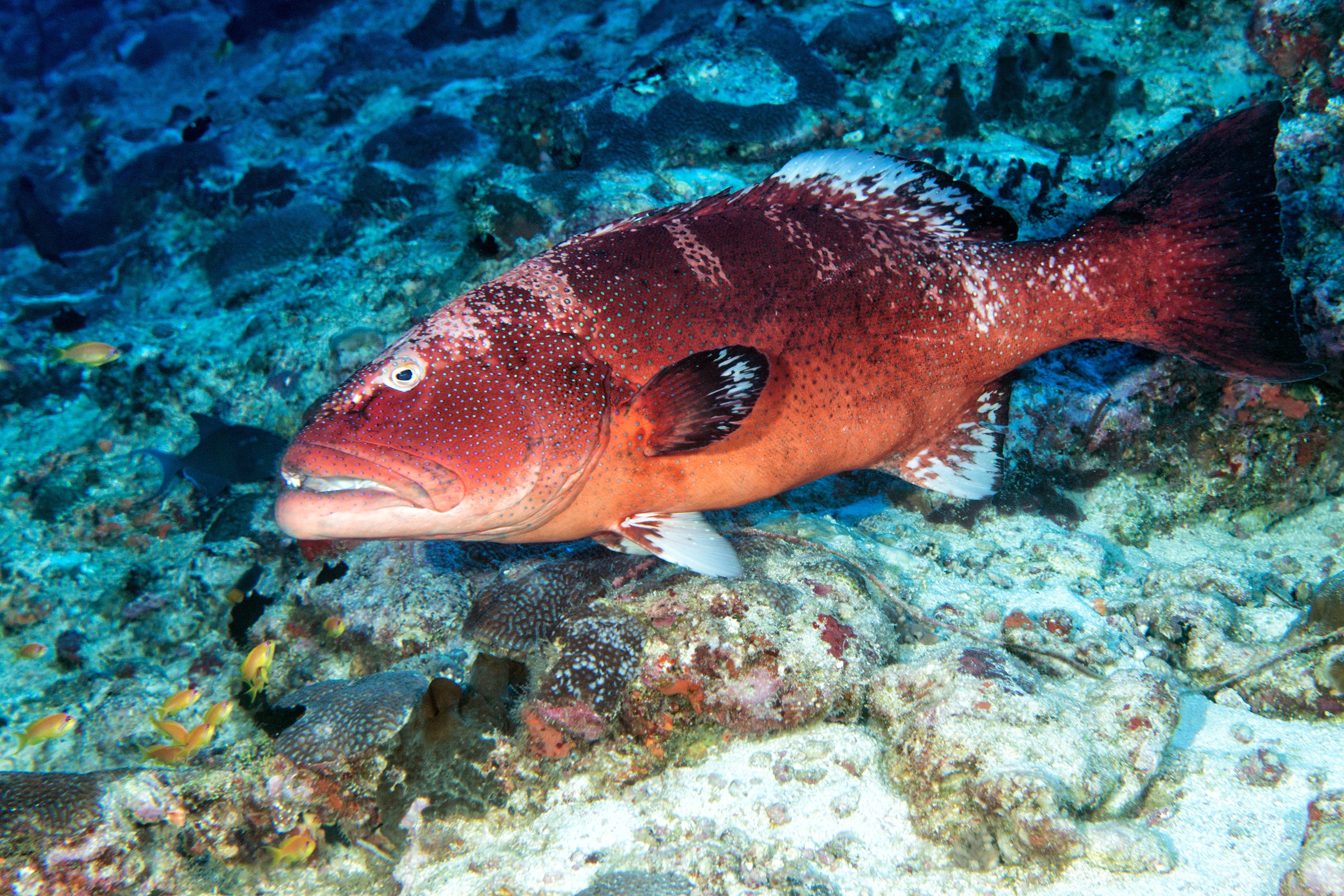
Also called cherna
, this fish is in the same family as the sea bass. Fun fact: many grouper can change their sex from female to male.
23. El Pez Betta
— Betta Fish/Siamese Fighting Fish
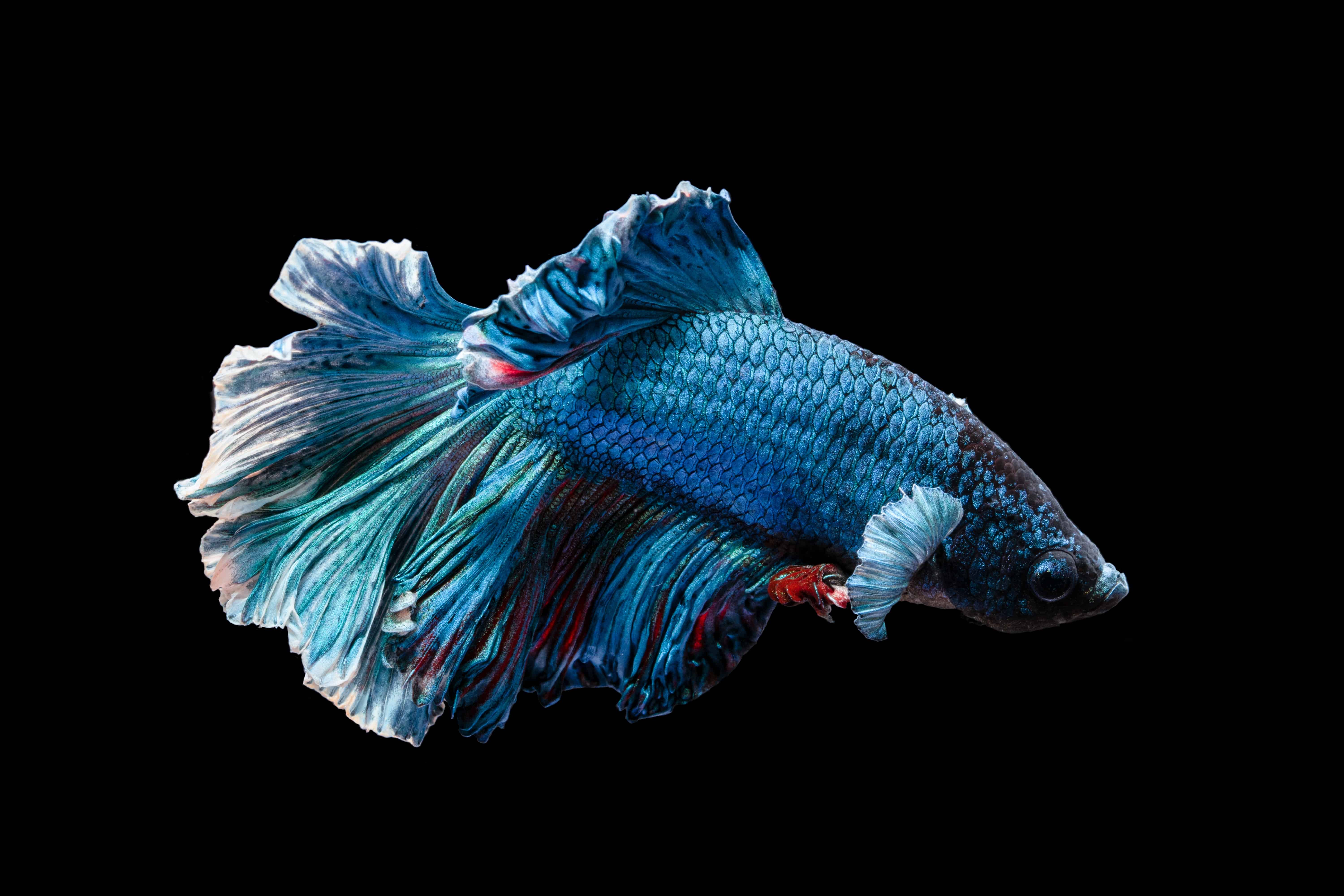
are vibrant and captivating freshwater fish popular in the world of aquariums. They’re native to Asia but are commonly kept as pets around the world. The males are very territorial, hence the name.
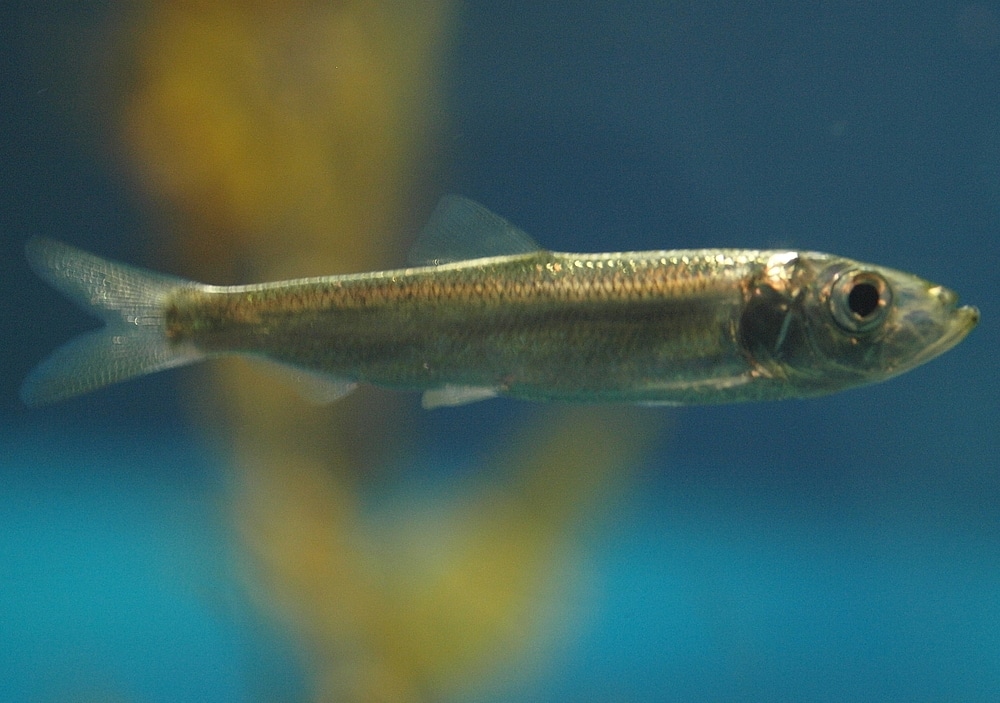
This is a small, oily fish found in both saltwater and freshwater habitats. It’s known for its distinctive flavor, is rich in omega-3 fatty acids, and is often pickled, smoked, or used in various traditional dishes.
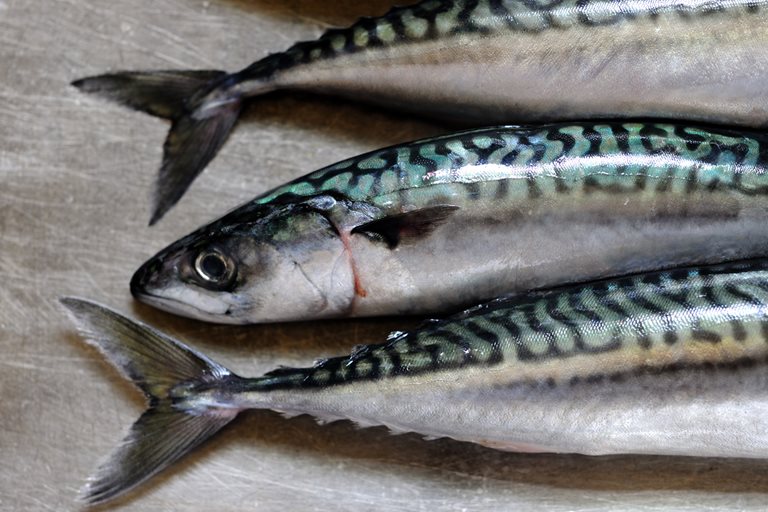
Other common, colloquial words for this fish include la caballa
(Latin America) and el verdel
(Spain).
Carite
is the specific mackerel variety known as “king mackerel,” and it’s a common word to spot on menus in Latin America.
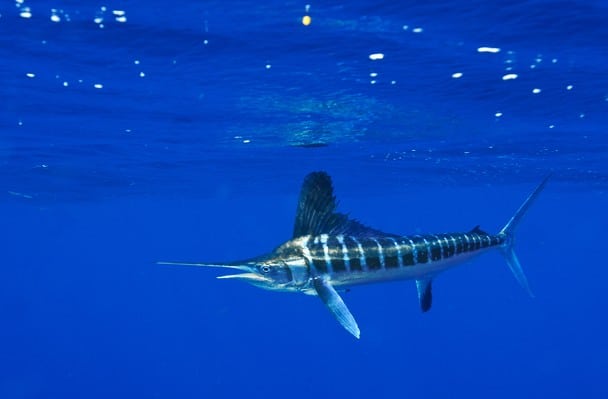
Both of these species of billfish are targeted in sport fishing. Blue marlin is a highly prized fish found in tropical and subtropical waters. It’s characterized by its vibrant blue color, long bill and remarkable size. White marlin is a smaller, agile and acrobatic fish, sought after by anglers for its challenging fight.
27. El Rape
— Monkfish
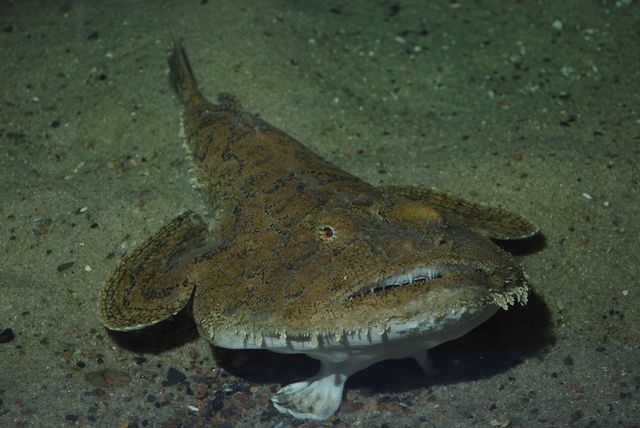
This fish is also called Pez sapo
or Pejesapo
due to its appearance (sapo means “toad.”)
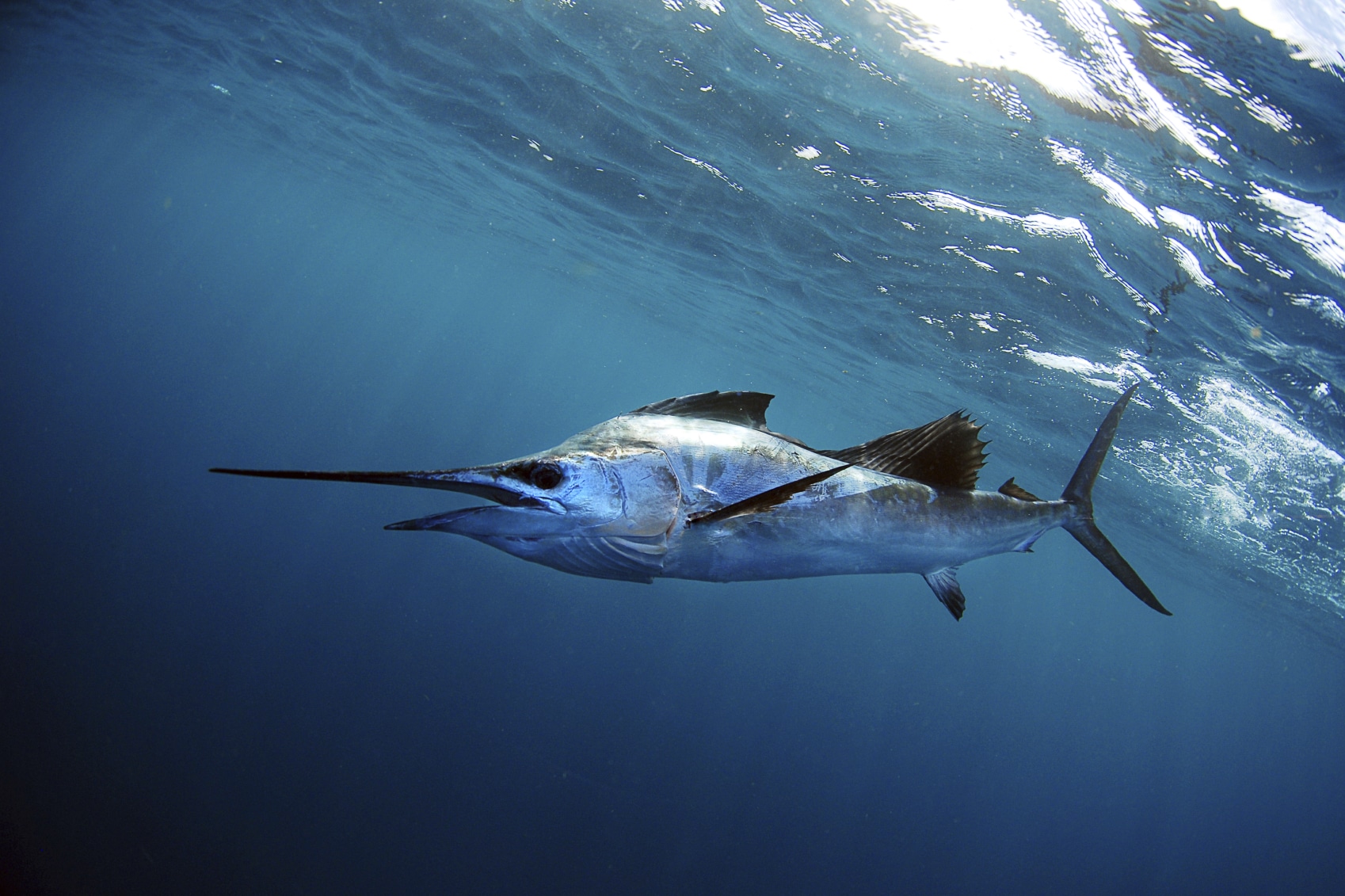
This is an iconic fish with a distinctive sail-like dorsal fin, which can be raised or lowered. Known for their incredible speed and acrobatic displays, they’re a popular target for sport fishing enthusiasts.

Here are some different kinds of sharks you might spot while traveling:
tiburón martillo
(hammerhead shark)
tiburón tigre
(tiger shark)
tiburón ballena
(whale shark)
tiburón galapagueño
(Galápagos shark)
pintarroja
(small-spotted catshark)
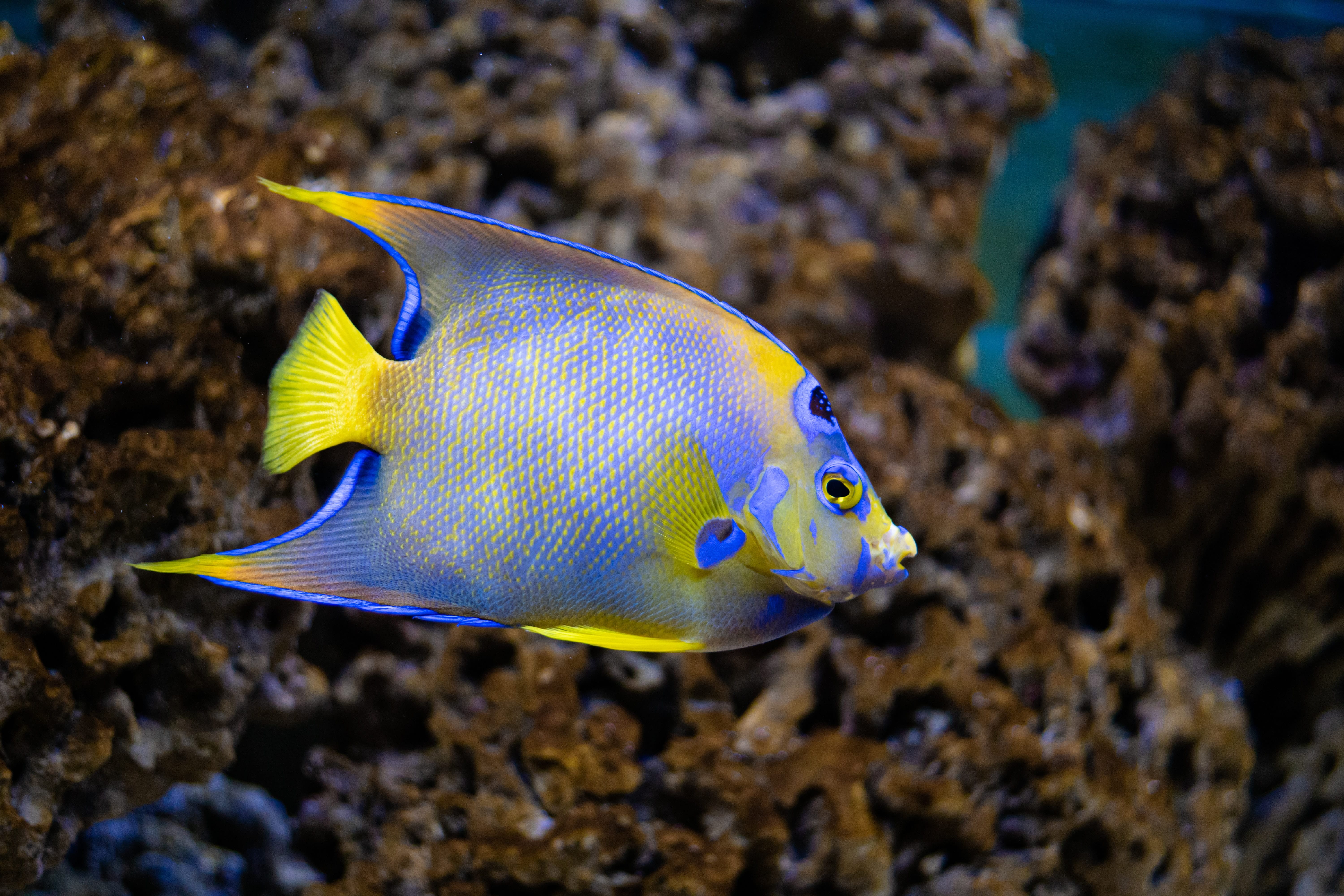
This fish is also sometimes called el escalar
. You’ve probably seen them gracefully swimming around a few aquariums.
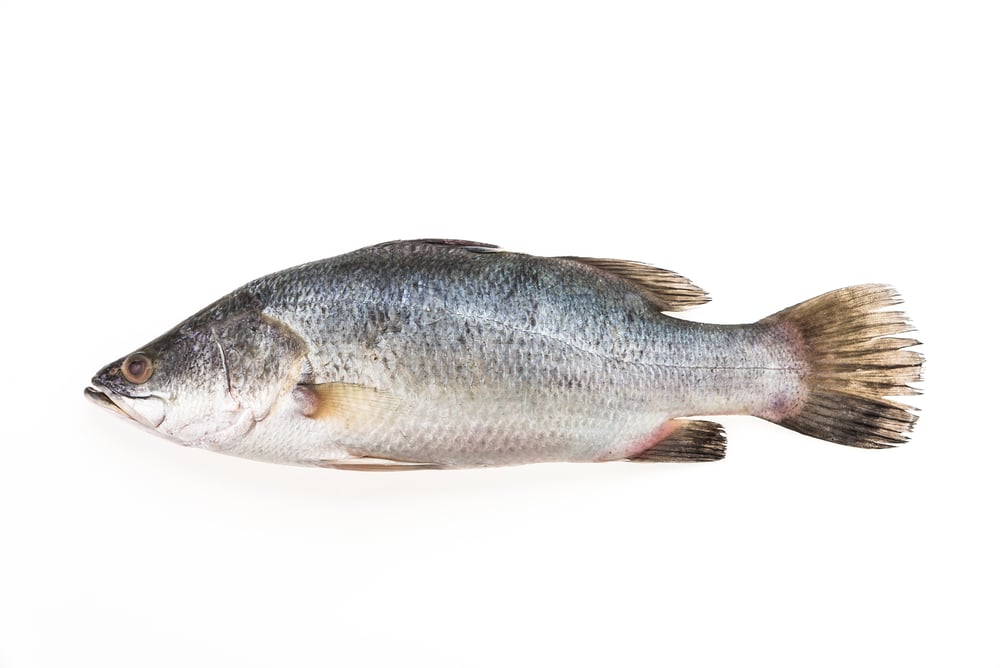
This prized fish can be found in various regions around the world, including parts of South America. What we call Chilean sea bass in English is actually the Patagonian Toothfish, referred to in Spanish as la austromerluza
, bacalao austral
or bacalao de profundidad
.
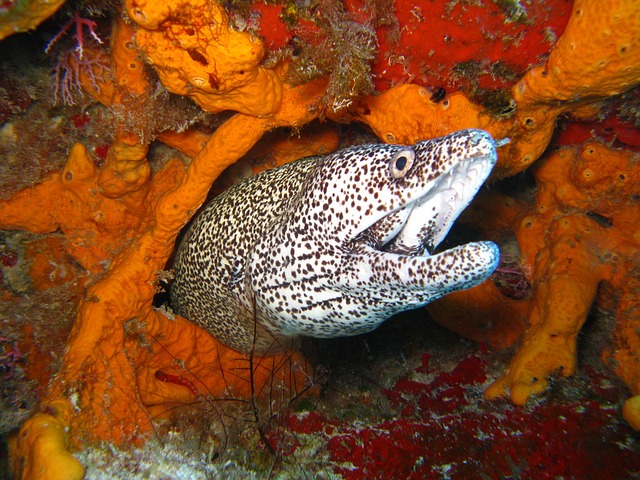
Here are a few different kinds of eels:
anguila eléctrica
(electric eel)
congrio
(conger eel)
morena
(moray eel)
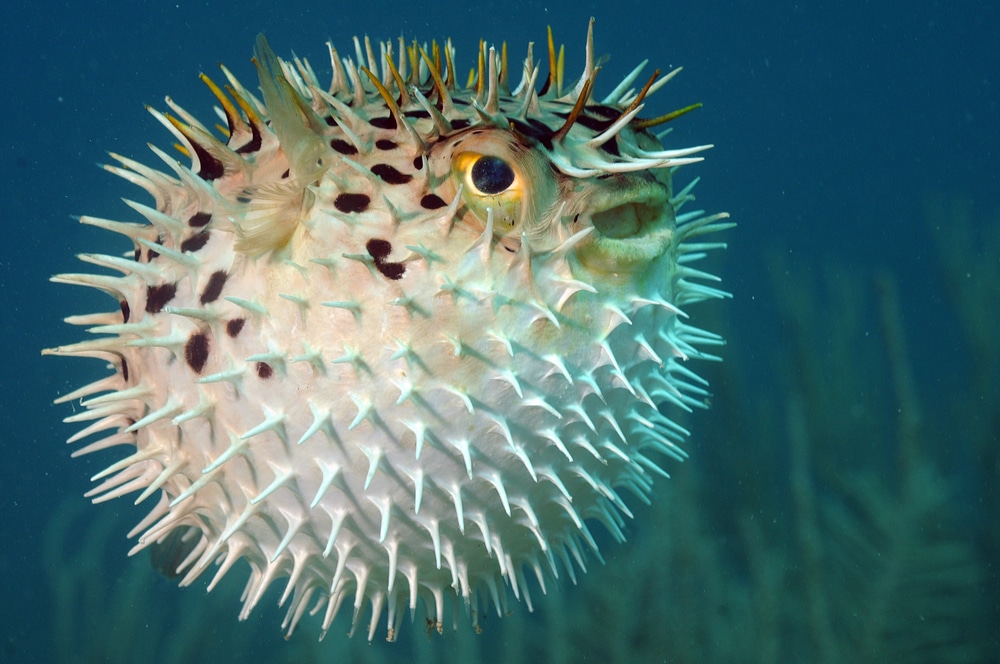
Also known in English as blowfish, they’re characterized by their ability to inflate their bodies into a ball-like shape when threatened. They also possess a toxin called tetrodotoxin, which makes them highly poisonous. These fish are considered a delicacy in Japan and must be carefully prepared by skilled chefs to be consumed safely.
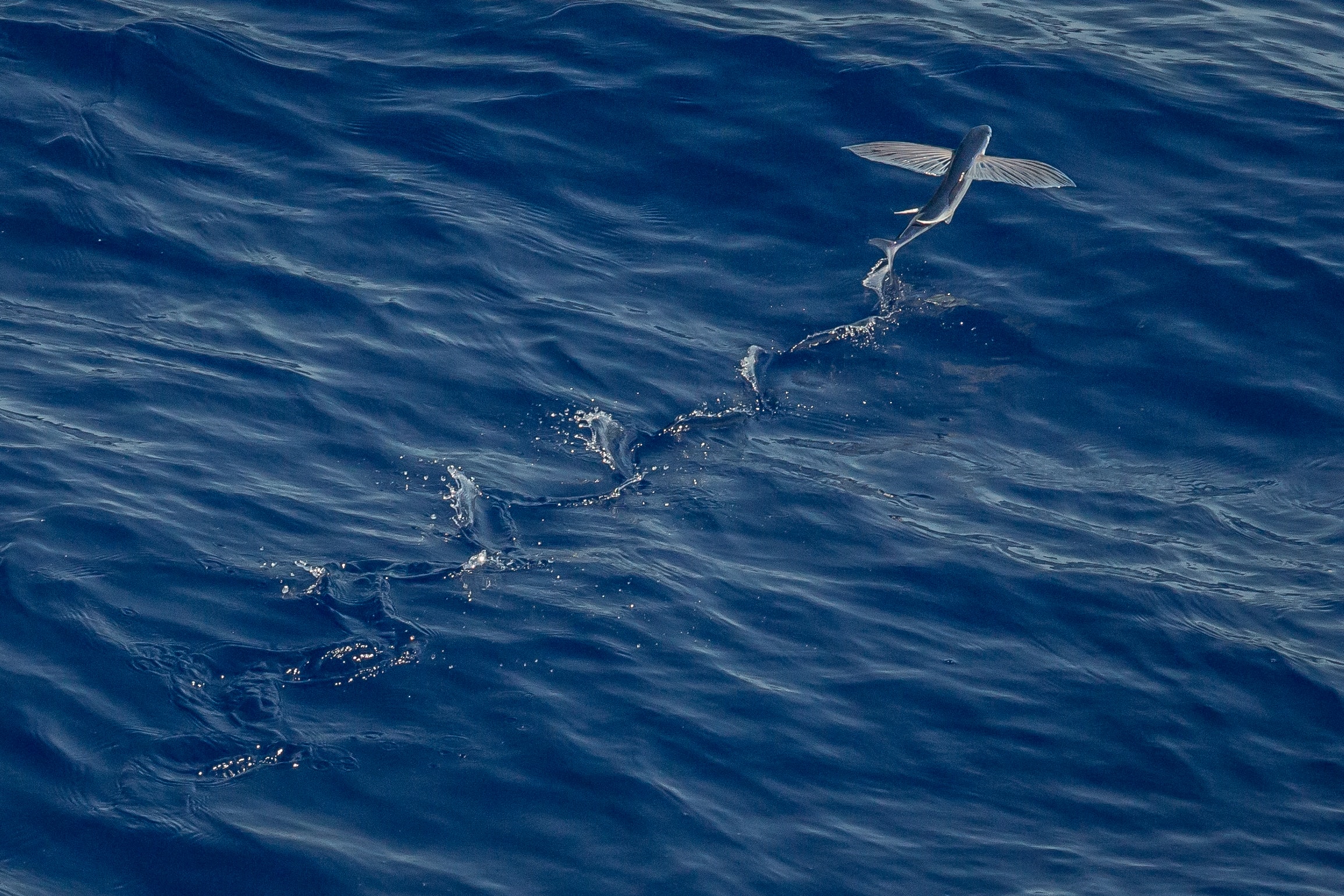
This fish, known for its ability to glide above the water’s surface, is often used in Caribbean and Latin American cuisines.
35. La Raya
— Ray, Skate
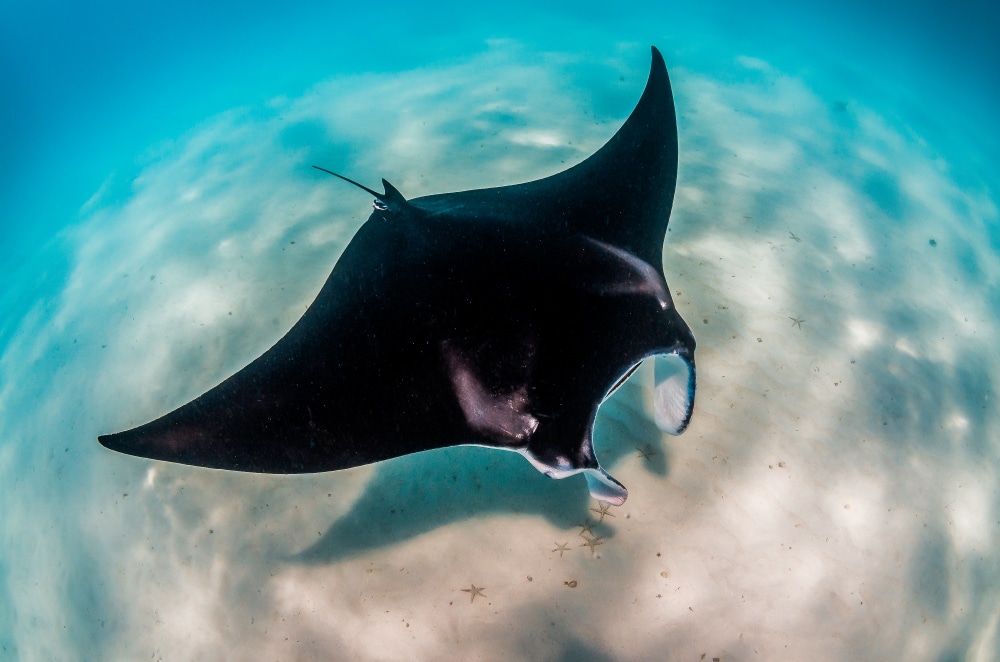
Rays and skates are both dorsoventrally flat-bodied fish that are closely related to sharks. Here are some names of different types of rays:
mantarraya
(stingray)
raya mariposa
(butterfly ray)
raya guitarra
(guitarfish/shovelnose ray)
raya águila
(eagle ray)
torpedo
(electric ray)
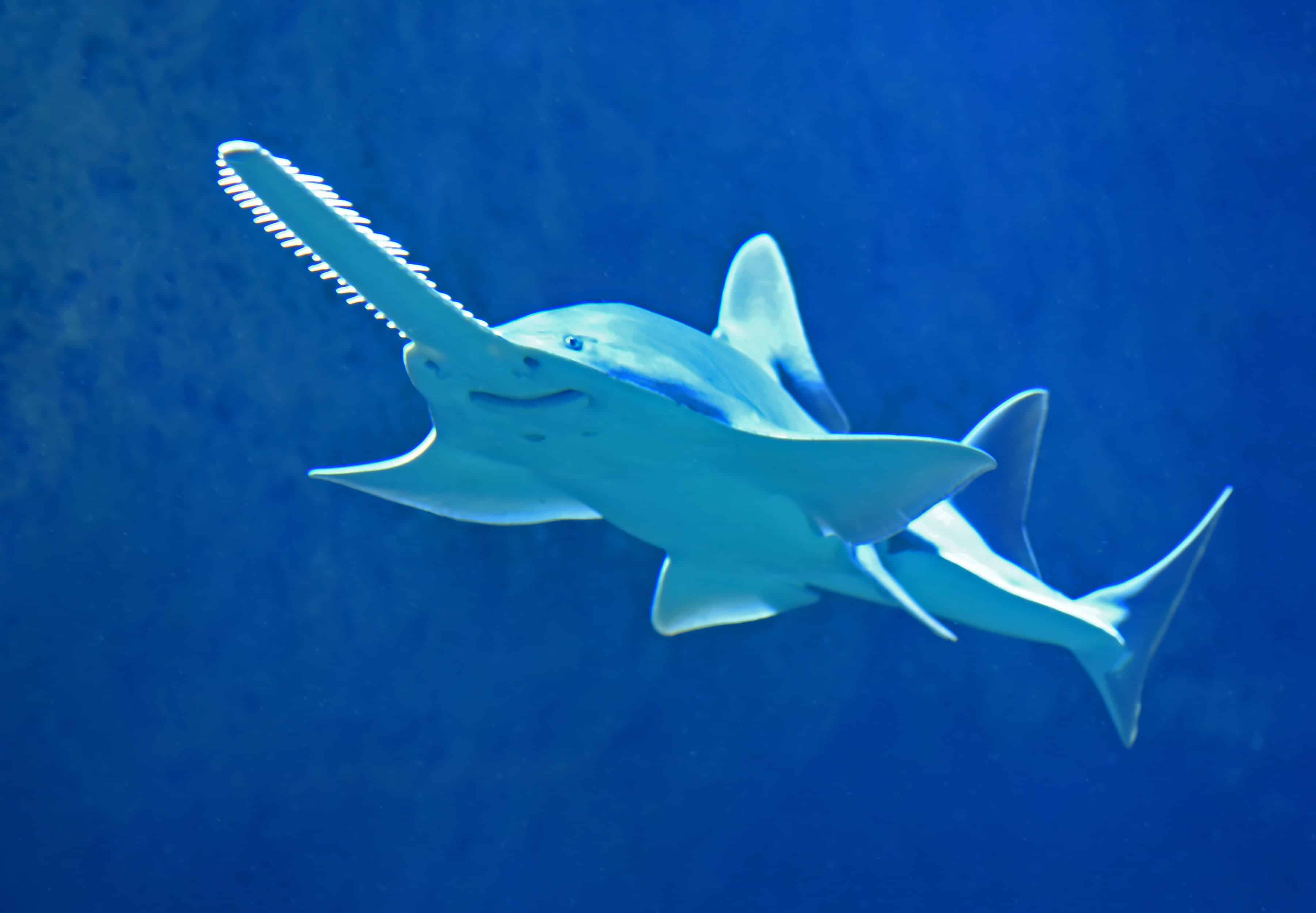
These large, unique fish are part of the same order as rays and skates and are also closely related to sharks. They inhabit tropical seas and estuaries and have a threatened conservation status.
37. La Chopa
— Sea Bream
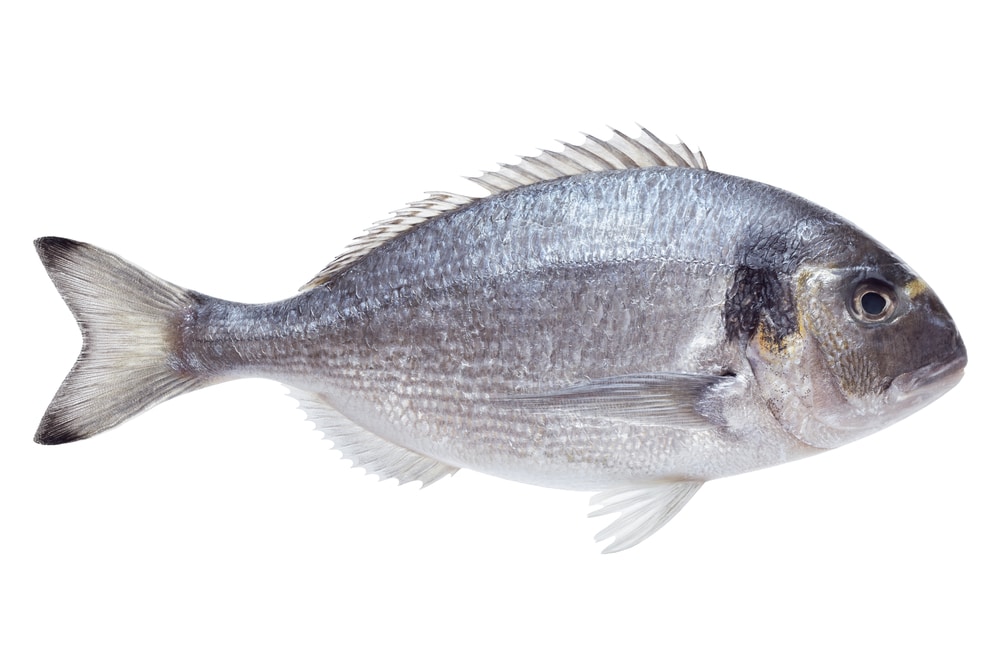
These fish inhabit coastal areas and are often used in Mediterranean cuisine. Here are a few other types of bream fish:
sargo
(white seabream)
besugo
(blackspot seabream)
breca
(red bream)
dorada
(gilt-head bream)
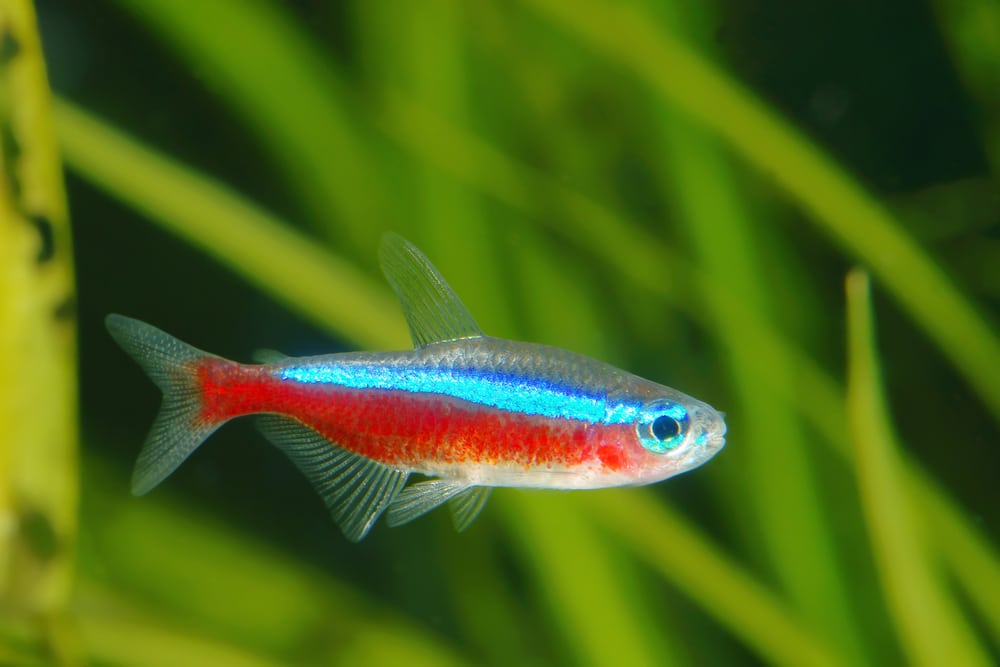
You’ve likely seen these bright, peaceful fish in aquariums.
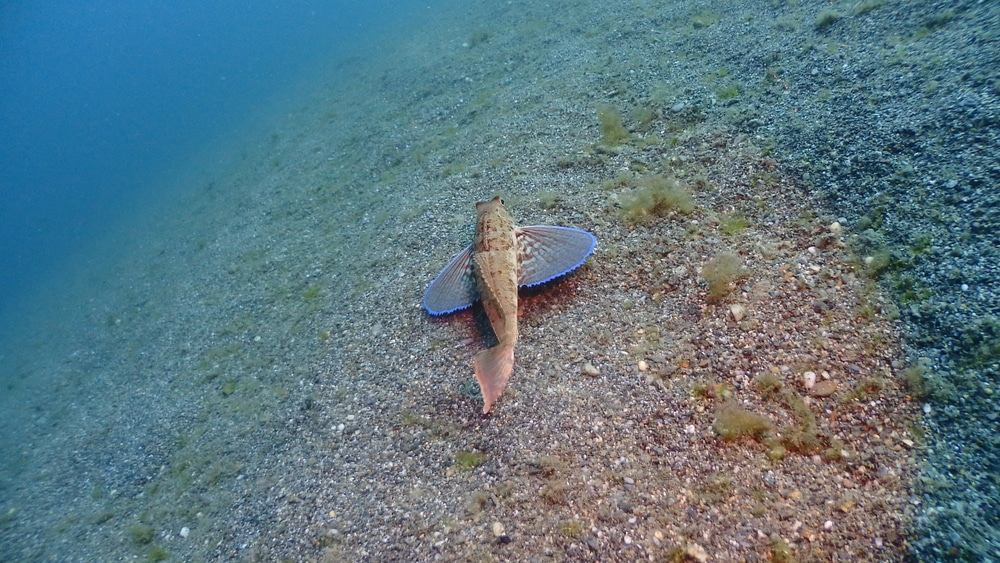
This fish inhabits sandy or muddy bottoms and has the ability to “walk” along the seafloor using its fins.
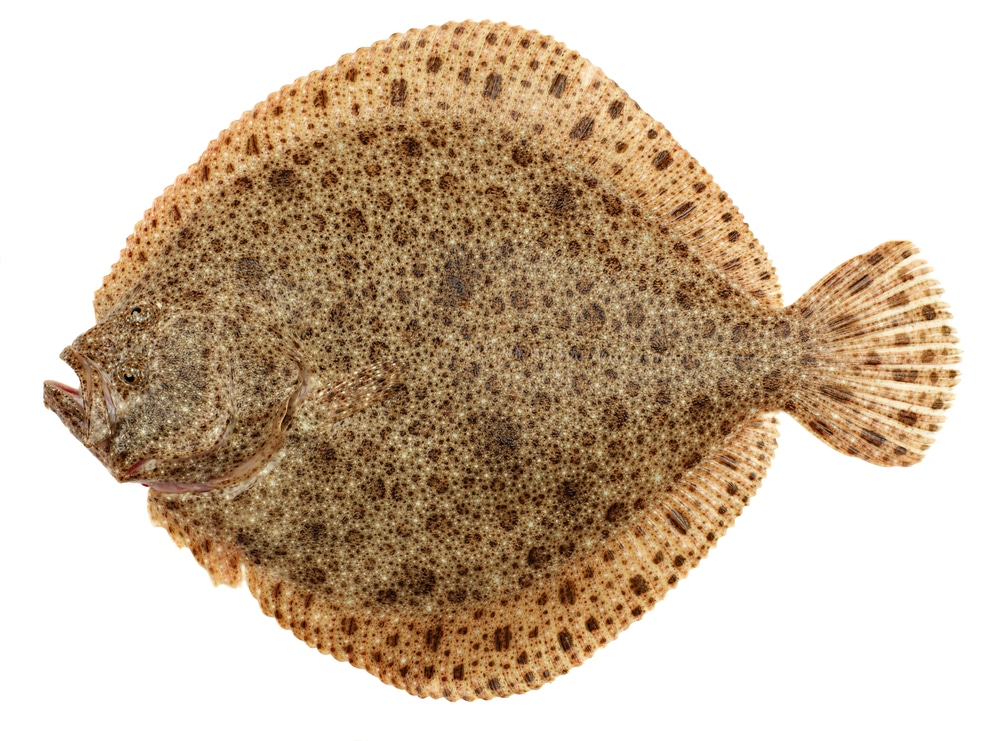
This fish is known for its ability to blend with its surroundings. It’s prized for its delicate flavor and is often prepared grilled or roasted.
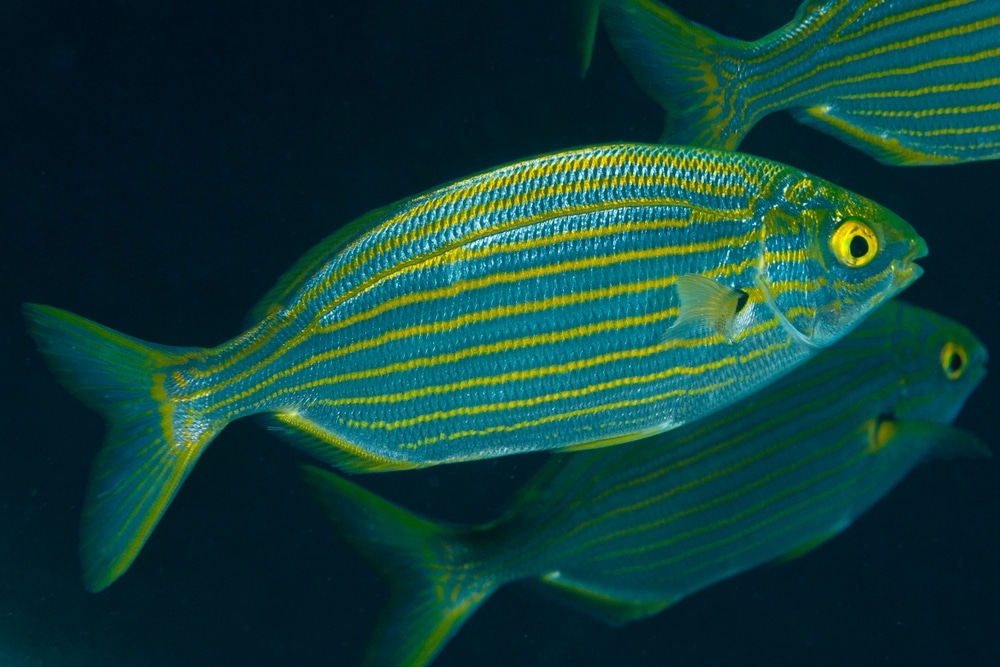
Also known as dreamfish, this is a colorful, medium-sized fish found in the Mediterranean Sea. It’s recognized for its vibrant appearance and occasional hallucinogenic properties when consumed.
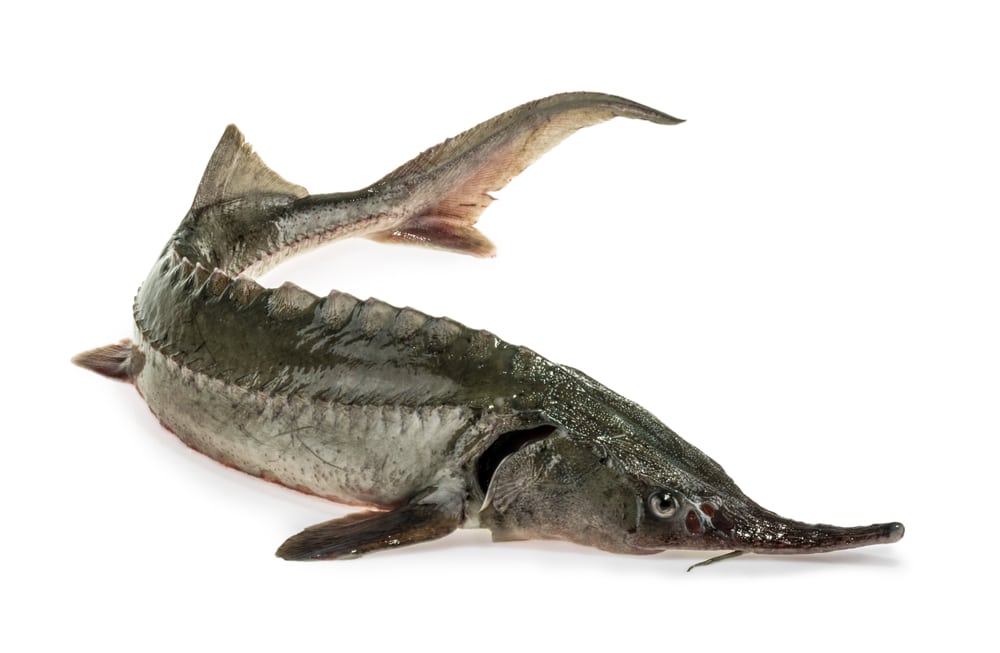
These fish are prized for their caviar but are facing conservation concerns, so maybe skip them on the menu.
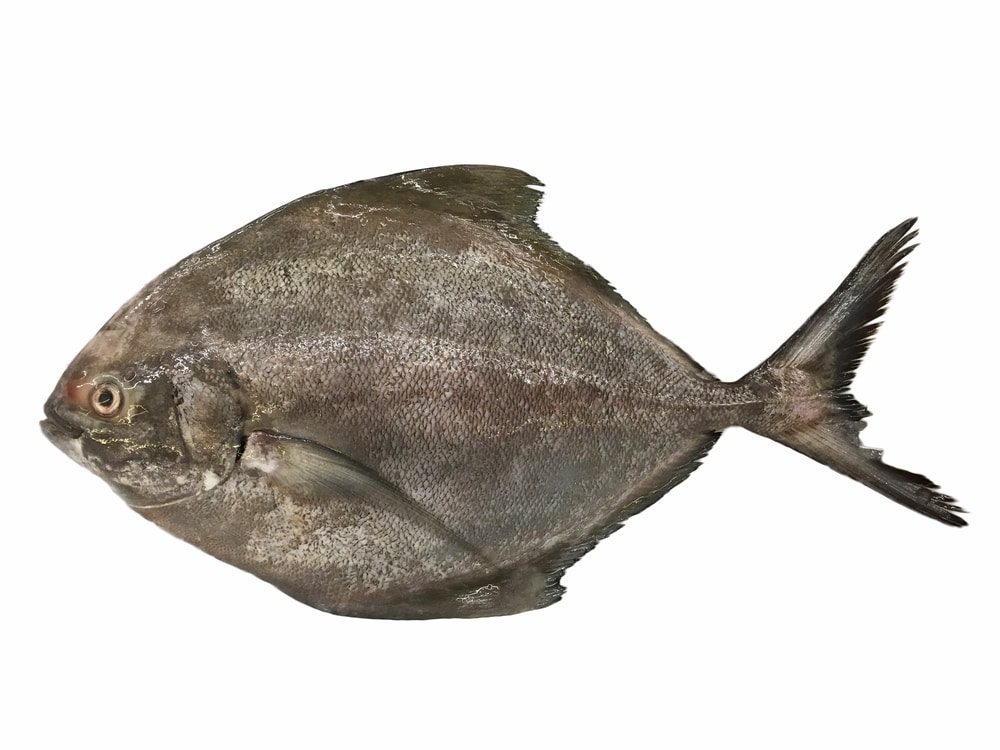
Palometa ahumada
(smoked pomfret) is gaining popularity on the market.
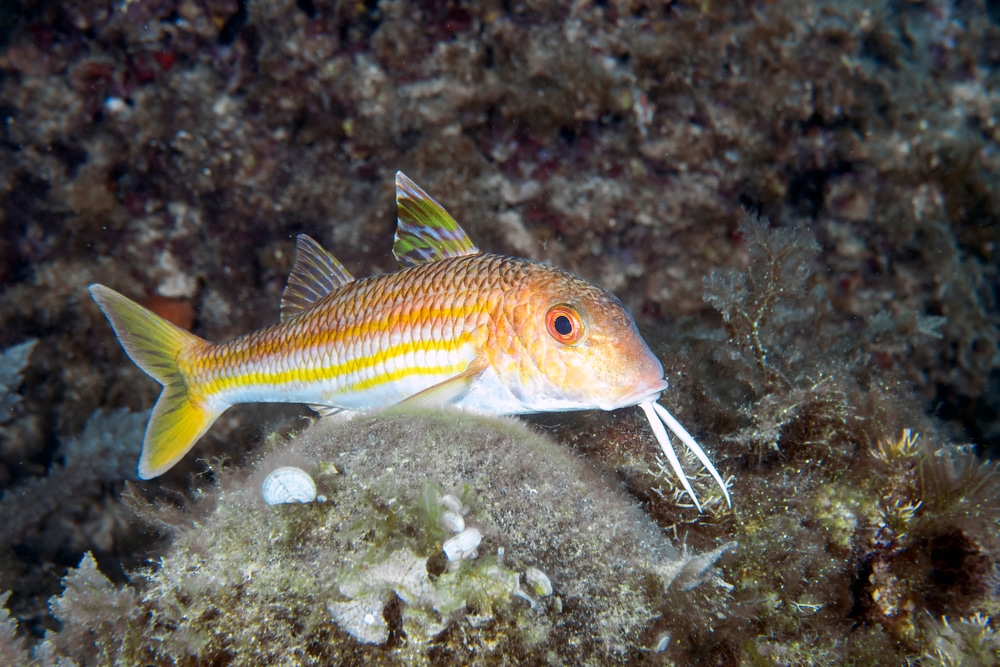
A salmonete de roca
is a rock mullet while a salmonete de fango
lives in muddy areas.
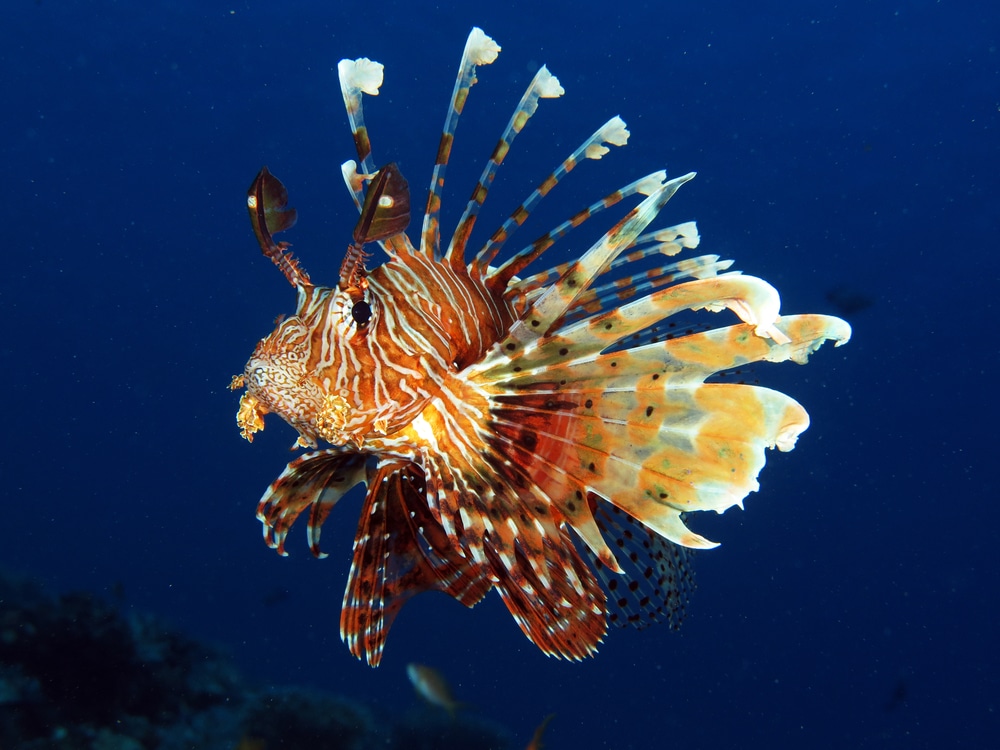
Here are the names of a few different kinds of scorpionfish:
rascacio
(red scorpionfish)
pez brujo
(Pacific spotted scorpionfish)
pez león
(lionfish)
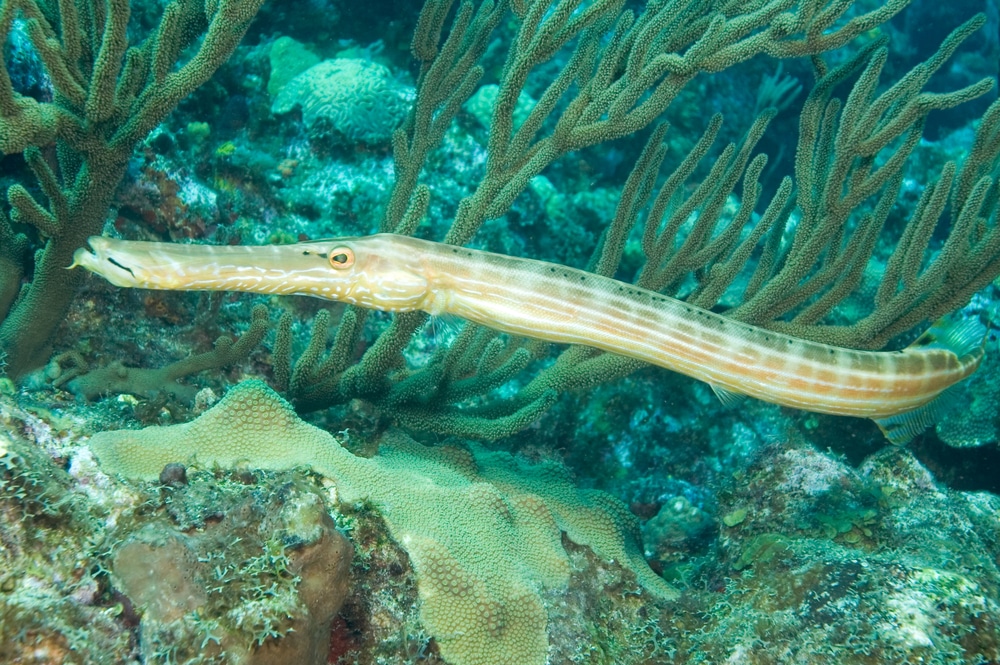
These fish have a distinct trumpet-like snout and a body that mimics the appearance of floating seaweed or coral branches. They use their stealthy camouflage to blend into their surroundings while hunting for small prey.
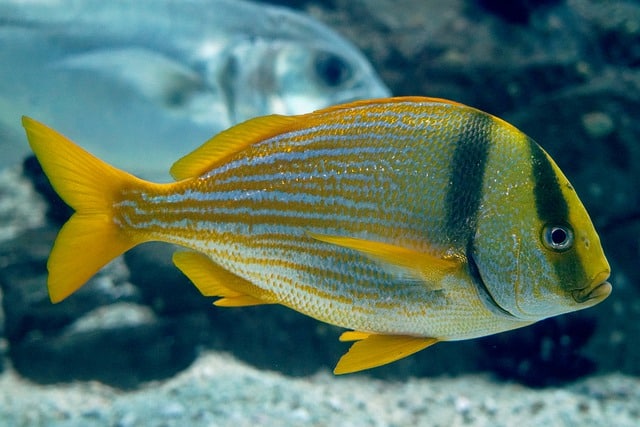
This medium-sized fish makes a distinct grunting sound by grinding its teeth. They’re often found in schools near reefs and sandy bottoms.
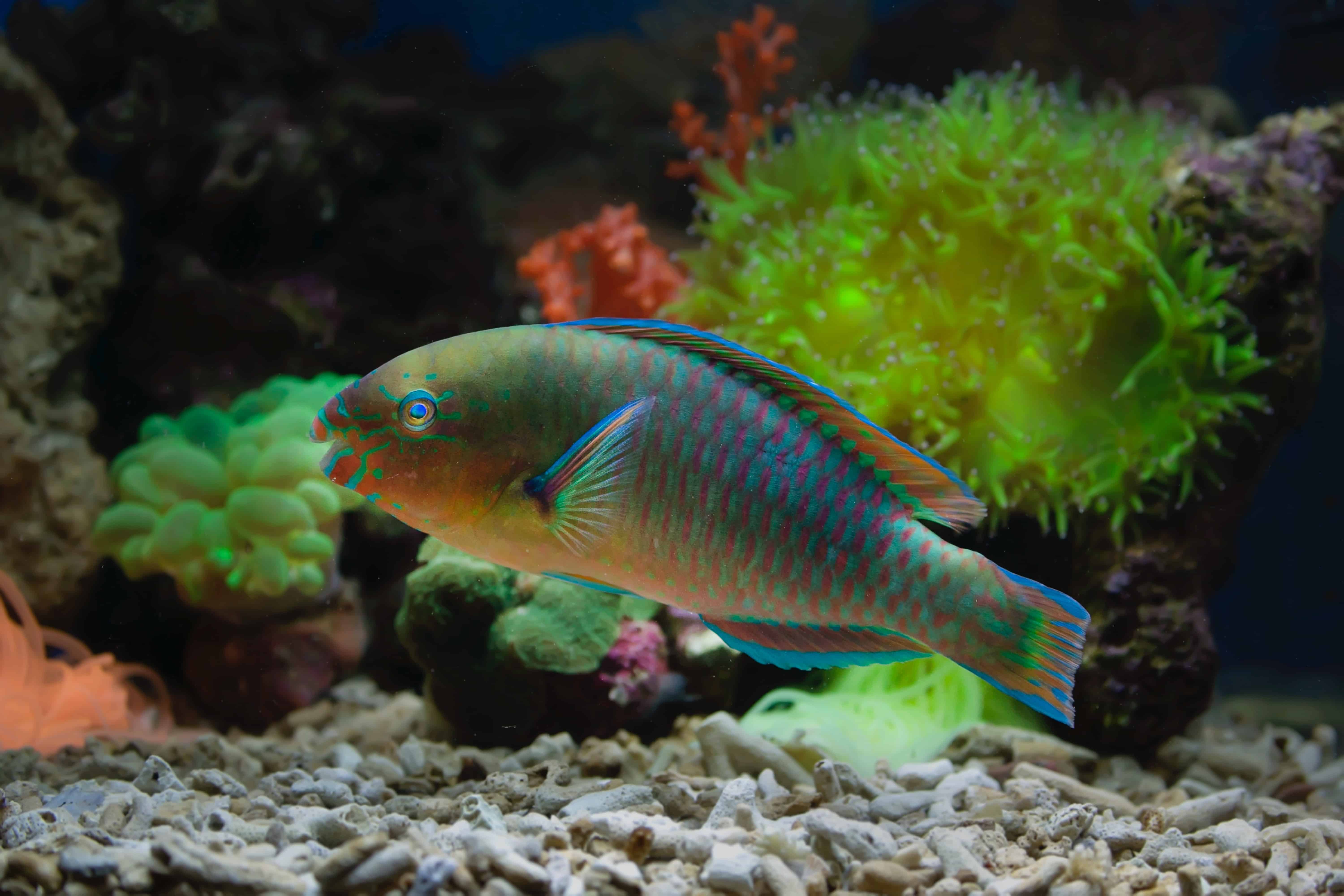
Loro means “parrot,” so now you’ve learned two Spanish animal names in one! These fish play a crucial role in coral reef ecosystems by feeding on algae and dead coral and excreting fine sand, contributing to the process of reef formation.
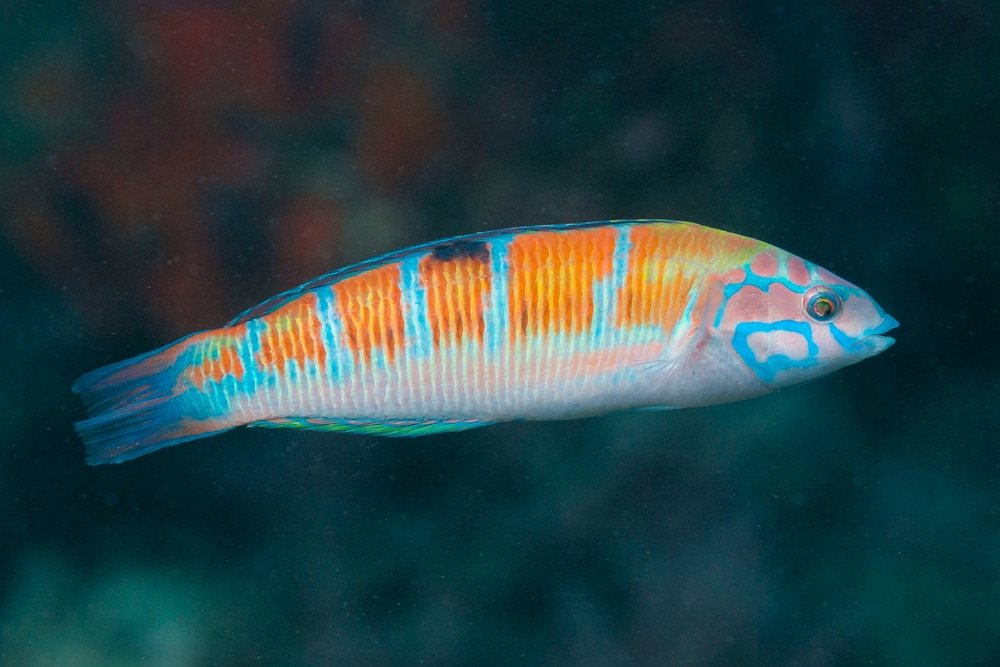
This is a small and beautifully adorned reef fish you might spot while diving or snorkeling in the Indo-Pacific region.
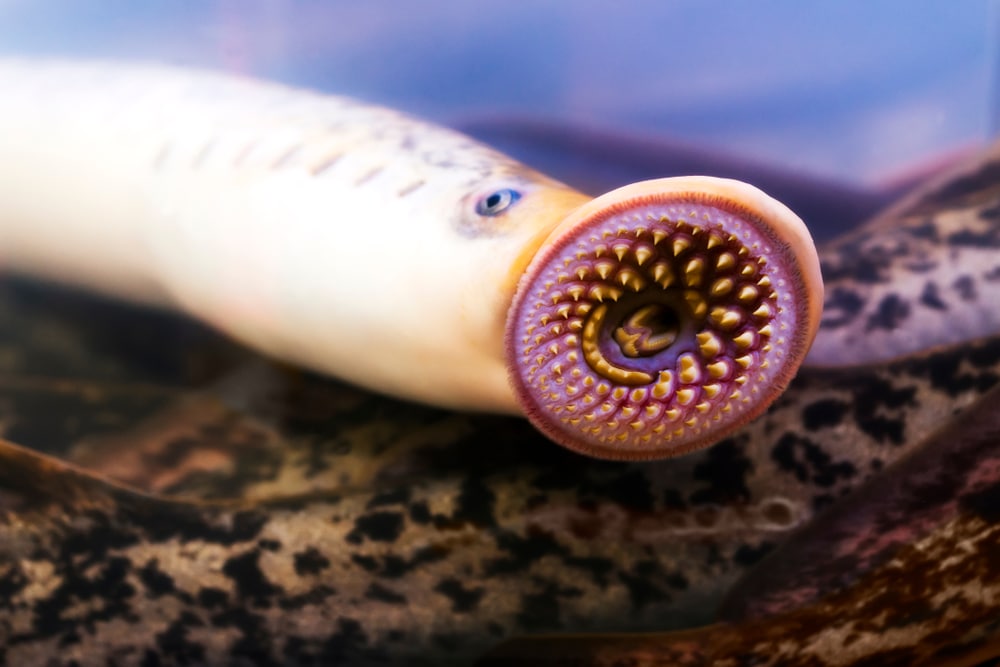
These are ancient, jawless fish with slim, eel-like bodies and circular mouths lined with sharp teeth. They’re known for their parasitic feeding habits. Cute, right?
More Vocabulary for Fish in Spanish
We’ll cover the three main ways you’ll talk about fish: (1) when observing them in their habitats, (2) when fishing and (3) when eating them.
Vocabulary for Observing Fish
Vocabulary for Fishing
To learn more about fishing vocabulary, and fish vocabulary in general, check out the Panorama de Pesca, a popular Argentinian fishing magazine.
Vocabulary for Cooking and Eating Fish
If you want to learn more fish-related vocabulary, or practice the words you’ve learned in this post, seeing new vocabulary in use naturally is an effective way to learn how to use them. The FluentU program, for instance, uses natural Spanish videos to teach the language.
Well, there you have ’em!
Your catch of the day Spanish vocabulary, fresh out of the water.
Enjoy these words for fishes in Spanish and more while traveling, exploring and eating.
¡Chao pescao, bacalao!
Download:
This blog post is available as a convenient and portable PDF that you
can take anywhere.
Click here to get a copy. (Download)
And One More Thing…
If you’ve made it this far that means you probably enjoy learning Spanish with engaging material and will then love FluentU.
Other sites use scripted content. FluentU uses a natural approach that helps you ease into the Spanish language and culture over time. You’ll learn Spanish as it’s actually spoken by real people.
FluentU has a wide variety of videos, as you can see here:

FluentU brings native videos within reach with interactive transcripts. You can tap on any word to look it up instantly. Every definition has examples that have been written to help you understand how the word is used. If you see an interesting word you don’t know, you can add it to a vocab list.

Review a complete interactive transcript under the Dialogue tab, and find words and phrases listed under Vocab.

Learn all the vocabulary in any video with FluentU’s robust learning engine. Swipe left or right to see more examples of the word you’re on.
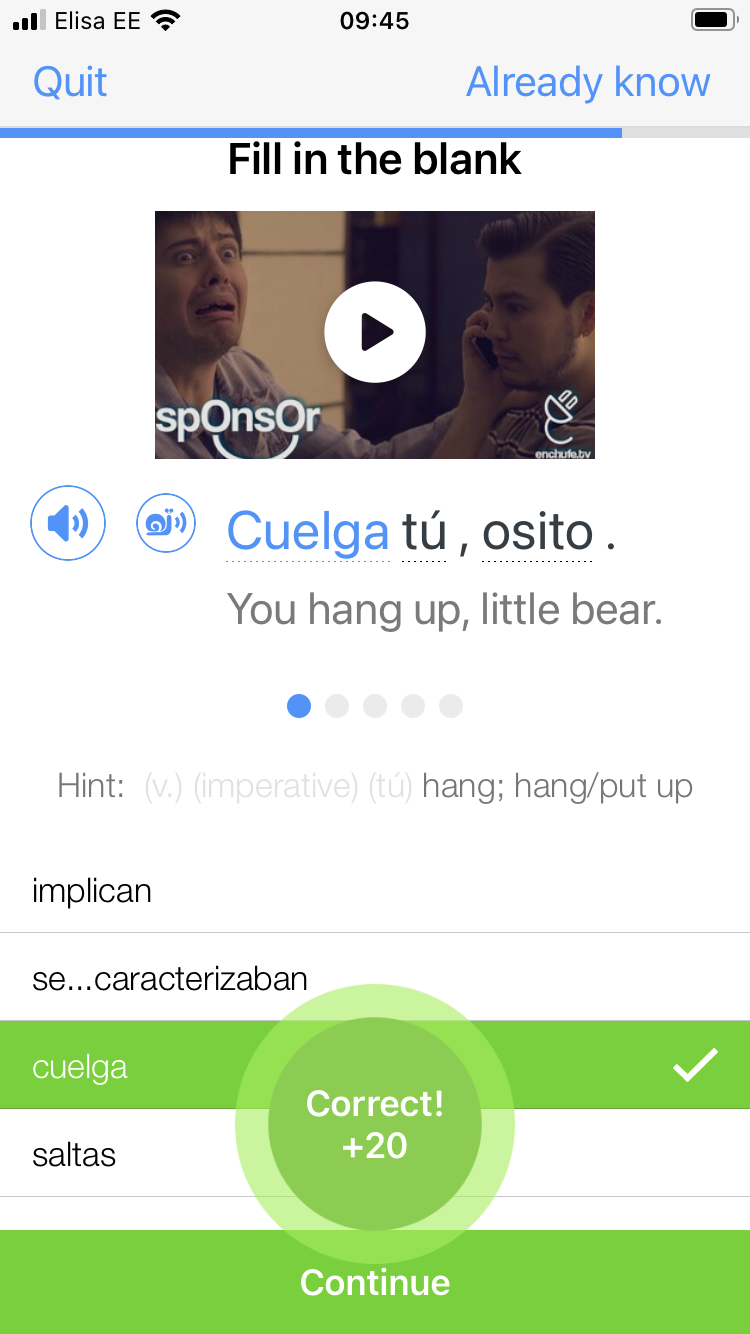
The best part is that FluentU keeps track of the vocabulary that you’re learning, and gives you extra practice with difficult words. It’ll even remind you when it’s time to review what you’ve learned. Every learner has a truly personalized experience, even if they’re learning with the same video.
Start using the FluentU website on your computer or tablet or, better yet, download the FluentU app from the iTunes or Google Play store. Click here to take advantage of our current sale! (Expires at the end of this month.)


![Fishes in Spanish: How to Say 50 Types of Fish [With Audio]](/wp-content/uploads/2024/02/different-types-of-fish-swimming-in-the-sea-768x512.jpg)
